|
In 2013, I briefly presented this iconic brand up there with the likes of YBA and JADIS. You can read it here: www.frenchvintagehifi.com/hardware/french-vintage-hifi-audioanalyse Since then, I have acquired a great deal of original documents from that era, courtesy of cabinetmaker extraordinaire Jean-Paul GUY. I had a request from my Facebook page this morning for more information on a potential special edition of the PA-90 integrated amplifier, hence why I though appropriate to put the original brochure online today. As it is both in French and English, I will serve it to you raw below! I have tried to compile a number of documents from various sources, including Audiovintage and Cabasse forums. You might want to visit these sites for more info in particular on the speakers.
If you have more documents, do not hesitate to forward them to us for future inclusion via our Contact page.Thanks in advance and Happy Lunar New Year of the Rooster! I have been communicating with Raymond for quite some time as he is the lucky owner of a pair of EA12 from my friend and fellow speaker designer Alain Wacquet. Raymond has also been helpful in providing information for my article on Confluence. He has just posted a comprehensive review of these fabulous speakers on the forum Audio Vintage and has kindly given permission to rewrite and translate his prose in English here. For those of you who read French and want to read the original post, here is the link: http://www.audiovintage.fr/leforum/viewtopic.php?f=20&t=56039 My notes are in italics in the text below EA12 presentation by Raymond Lerat - The English version Raymond Lerat had the pleasure to meet with Alain Wacquet in Nancy chez Audio Video Son in the mid 80s. He found him affable and full of humour with a smile on his face, and passionate about music with a penchant for jazz, and a composer himself, up to this day where he indulges in more esoteric compositions with prepared instruments and noises. He was born near Lille in the Northern part of France, close to the Belgium border. (This is where I met Alain...) Raymond first interest in presenting these panels to the Forum was to gauge the level of knowledge, interest and exposure that the members of the forum might have with this confidential range of vintage speakers from the early 80s. Raymond notes that all people he knows who have been exposed to AW speakers were all enthusiastic about them, specially when reproducing jazz ensembles and small classical formations where they excel. Their main characteristic been described as "energetic", with a real sense of "beeing in the room" and with perfect imaging and spatialisation. All reports written over the 10 years of research by Raymond have all returned an "enthusiastic" response. The way Raymond describes his first encounter with AW Audio fells short of a "love at first sight" declaration, but like often, the object of ditto love seems unreachable financially and is left confined to the realm of dreaming...until such a time where it suddenly becomes accessible. Raymond goes on to describing various experiences with other panels, like Magnepan, Stax, Audiostatic and Quad, products which were not lacking in anything, but which would actually add undesirable things, in his opinion. With Magnepan for instance at the time, the image of a piano might have been stretched to 15m or so, within an orchestra which would feel like 20m wide, so the proportions of the sonic image was distorted. Inadequate dynamic range, lack of the bottom octaves, short circuit between front and back fields made it near impossible to position the panels for the best results in a given space. Lansing Trimline, DCM Time Frame, Carver in the US, Phonophone, Triangle in France have tried to use electrodynamic drivers to design such a type of speaker with various degrees of acoustic success, but no commercial one. Alain Wacquet managed to stay in business for over 10 years, while producing a "haute couture" type of product, made by hand, with love and exceptional craftsmanship, hence expensive. The objectives and typical qualities of an electrodynamic panel are a credible horizontal and vertical image, with a cylindrical polar response, providing a stable, accurate and homogenous response and image. The impulse response - slew rate - will have to be exceptional, vastly superior to any other system, with a very good reproduction of timbres, the hallmarks of an acoustic doublet system. The use of a linear array of mostly identical small full range drivers will provide such result if they are correctly implemented. If not, the result will be like a "sonic porridge" as Raymond nicely puts it. NOTE: I have found this measurement from a LEEDH Perspective designed by Gilles Millot, using the same driver as a midrange. This shows the exceptional impulse response of the main driver used by AW Audio, a WFR12 from Audax. It is to be noted that 6 12cm drivers have an equivalent surface to a 300m woofer with half the mass...But the resonant frequency would be about double, hence why the lower octave can't be reproduced at the same level as a 300m woofer which fs would be around 30Hz. Obviously, it will be expected that the lower octaves of the audio spectrum will be somehow reduced in level, but still extremely clean because of the speed provided by the light membranes of the drivers, but also by the acoustical short circuit between the front and rear waves. Trying to add a subwoofer often results in a bad marriage, which Raymond describes as trying to mate a carp and a rabbit! Raymond has experimented with electrostatic and isodynamic panels over time but found them lacking inefficiency, and dynamic range, qualities required to give life and freedom to the music, a treat that a boxed system cannot achieve. For these reasons Raymond had abandoned his quest, even though he owned a pair of QUAD ESL 63 in the 80s. The various advantages of a panel speaker compared to a box speaker A bit of history - You might want to read my own articles on the timeline of AW Audio The AW Audio adventure started in 1985 after two years of research prior, resulting in the introduction of the EA12 first panel, then the less expensive EA11 and finally the outstanding EA16 which only 10 pairs have been sold. Later the EA12 would be replaced by the PA12 and there are a few units of the ultimate Transparence (in Alain's basement...) all this over a 10 year period and through a handful of dealers around the country. Raymond didn't get a chance to listen to this second generation of panels, which seem to carry the same drivers, although they are no longer locked behind the fabric. (neither did I...) Obviously, the difficutiles of marketing and selling such a boutique range of products of such high quality, superb finish, designed by a passionate and uncompromising man such as Alain was not a piece of cake, having to abide by the rules of greedy esoteric and high end dealers, (being used to extravagant margins to push such a product and others..) Raymond goes onto explaining some of the reasons behind Alain's decision to abandon the project although all public demos were all spectacular and well received in comparison with similarly priced products at the time. Essentially, it was extremely difficult to transform all these marketing efforts into sales. (I have witnessed a number of these demos and they are amongst the best I have ever heard at any price... It took me decades to find something better, and you probably know that I am referring to my friends at Kyron Audio here!) Raymond goes on to compare the experience of listening to an AW Audio panel to the degustation of a Grand Cru wine, as it stays with you for the rest of your life either on the palate or in your ears. (Obviously, you can rejoice time and time again to the pleasure of listening to a pair of good speakers, difficult and somehow far more expensive to keep drinking bottles of Ducru-Beaucaillou 1982, my all time favourite wine, if you can find some, that is...). The relation between cost of manufacturing and sale price is quite similar in both cases... To calibrate the topic, a pair of EA11 cost 15500 francs, EA12 25000 Francs. EA16 50000 francs. (The dealer was probably buying them for less than half that price, and a pair of EA12 was equivalent to my generous monthly salary at Hewlett-Packard..., so Alain would have to sell at least two pairs a month to barely survive!). A pair of EA12 was sold at the same price as a pair of Confluence "Pastorale" designed by another atypical engineer, musician, music lover and passionate. Alain Wacquet had some serious criteria and objectives to design his panels: linear phase, homogeneous polar response, slew rate and extended dynamic range, timbres accuracy and enough bass in such a dipole setup, maybe not as deep as a traditional box speaker, but certainly cleaner in many aspects. The AW Audio panels had very few rivals at the time with these parameters in mind.
Alain has never unveiled anything much about the crossover schematic, nor the treatment of the midrange drivers, but one can see that 8 drivers (WFR12 from Audax) were used in line, the two top ones have some treatment applied and are dedicated to the midrange, the six at the bottom are the bass drivers. A Focal tweeter takes care of the higher frequencies. It is a 2-way electrically but three way acoustically. The coherence and balance of the system are outstanding (The quality of the voices, male or female and accuracy of the timbres particularly on percussions were astonishing and Alain was a perfectionist when it came to choose the music that would put the best out of his speakers... At some hifi shows where we were both exhibiting, I would sometime abandon my own stand to delight myself in Alain's demos...). The AW Audio panels are quite easy to set up, specially compared to other types of panels, when it comes to spread and tilt as well as distance from the walls. A reasonable power amplifier is enough as the efficiency of these speakers is around 91db/1w/1m. Even a valve amplifier will be a good match, bringing out all the qualities of the panels on vocals and small musical ensembles. Listening test In a few words, the general impression left by listening to the EA12 is one of balance, with an image as wide as it is high and deep with a great sense of precision, without halo around the instruments, with no listening fatigue. The differences between live or studio recordings are well articulated as there is no fuzzyness attached, giving the impression of space between the various instruments, what can be expected of a panel speaker versus a traditional cabinet of the same quality. Percussions are very realistic, the brass are physical, and the strings are very quick, all timbres rendered with accuracy, speed and finesse, the vocals are superb, palpable... The bass is as speedy as the upper spectrum, there, with a sense of freedom, it breezes... All listeners agree that, even though the very bottom part of the spectrum is not present, the quality of the bass is second to none, not withstanding much larger box speakers. Having bought the Confluence "Pastorale" two weeks after getting the EA12, Raymond had extensive comparative listening sessions over the last two years. The EA12 excel at jazz and classical small ensembles with their imaging, finesse and precision, still providing a big sound even at low volume On the other hand, the Pastorales are more polyvalent, specially if one listens to pop, rock or soul music.. (I am tempted to disagree with Raymond on this, being a great lover of small speakers, where imaging, precision and finesse are more important than a lot of bass. In many ways, AW Audio and Microphase were very similar in their objectives and were both very accurate and quick, with a great imaging, hence why we became friends quite naturally). Each speaker brings its own character to the party and that is why so many people design speakers as it is still the realm of some "black magic", definitely an art form. Raymond goes onto stating that his "graal" for listening at home still favours high efficiency and dynamic range over other criteria, implicitly giving the preference to AW Audio. It is worth noting that the EA12 and the Pastorales are in the same price range, hence there is a valid point in comparing the two systems. Raymond concludes by saying he was very lucky to find a pair of EA12 to buy, almost 30 years after having first seduced by Alain's demos and contraptions, as most owners of AW Audio panels tend to keep them for themselves. And I would agree with that statement 100%!
The iconic venue, known originally as the PLM Saint Jacques, was built in 1972 and designed by Pierre Guidicelli. It has been home to numerous Hifi Shows and the last one on November 21st and 22nd. I sent my own reporter in the person of Jean-Paul Guy, owner of GUY H.F. and speaker manufacturer extraordinaire for decades. He was kind enough to take photos of what he thought interesting and added a few notes that I will post here 'en anglais', lucky readers!
And no, Elipson was not there, as they had chosen to exhibit at the the other Hifi Show organised by Jean-Marie Hubert a few weeks before. But you know my passion for Elipson...
The "cloud du Salon" was in fact Deviate with their fabulous amplifiers but mainly for JPG and myself, the Phantom speaker! Jean-Paul has actually revealed to me that our other friend Philippe Lesage, ex Technical Director of Addax when I first met him and now director and owner of PHL Audio was heavily involved in the design of the bass drivers. He was also involved in the design of the drivers for the 4260 Elipson a few years back and in the design of my main driver for Microphase, an enhanced version of the MHD10. Mr Legorgu, Director of Addax at the time said to Jean-Paul: "I have just hired a savant!". Not a small token of appreciation! Philippe actually took over from Jacques Mahul, who didn't do too badly either after leaving Audax... I have recently posted about my first experience with the Phantom, and interestingly enough Jean-Paul have a similar conclusion saying this might be the end of the Utopias, Wilson Audio and other big contraptions. He is also mentioning the reference to Cabasse with the same comment i-e, this works!
I will continue with other French products like LEEDH, the amazing small speakers designed by Gilles Milot, another ex-Audax engineer, by the way...Jean-Paul, who is an art lover and connoisseur, calls him the "Giacometti" of the speakers. You can find more information about Gilles Milot and his speakers elsewhere on this blog. Since my last encounter, Gilles Milot has developed a matching subwoofer. There are obviously similarities in the design intent with the Deviate phantom, although this one is passive for the satellites, but active via a traditional amplifier for the subwoofer.
.This new subwoofer is based on the isobaric principle popularised by Linn decades ago. Here two 23cm drivers face each other in a 16L enclosure (Atohm LD23CR08) and two Pro Audax 38cm (AAC PR38T0). A two-channel 300w plate amplifier also from Atohm drives the woofers and gives the system the efficiency and the low end of 20 Hz at -1dB (to be compared to the 16Hz of the Phantoms). The main benefit of using this subwoofer with the E2 is to relieve them from trying too hard to move air to reach down to 50Hz, giving the whole system breathing space. If you read French, then I recommend you read the review on EVMAG here
The usual suspects were also there as in Focal presenting the new SOPRA, an avatar of the Utopias driven by Octave Audio amplifiers, PE Leon using YBA amplifiers and Davis Acoustics still pushing the Karla, one of their best design ever.
There was also an interesting contingent from our British friends who crossed the Channel for the occasion... B&W were presenting the famous Nautilus, and the new 802 D3 with amplification from Classé Audio and Devialet, KEF with the Blade 2 and Pass Labs amplifiers (not for the faint hearted...)
I couldn't resist sharing this video with you...It will save you the time to search for it!
This is by no means exhaustive and I have to say a "grand mercy" to Jean-Paul Guy who went to Paris from his sleepy village of Bourbon-Lancy specially for the occasion, at a time where most Parisians were staying indoors after the terrorists attacks. Well done my friend!
Confluence was started in 1983 by Christian Gerhards, an ex-teacher whose passion for music got him into speaker design. The company survived until 2001 when it became Soneco. All the models share the same design principles of cabinets with non parallel faces and rectangular port(s) at the bottom. They mostl use double coil Focal drivers and a rare Audax tweeter, derived from the famous TW51 with a small rectangular horn in front. GUY HF manufactured the cabinets for these speakers from 1991 to 2001 and then Ets Berthommé in Availle (Limousin) took over. The Cantilene has been the most successful model commercially. I will make a particular mention of a model that was not a success, more an experiment. I am talking about the Chimère, a 125kg monster with no money spared and amazing design principles. First is the use of a Phy-HP full range driver with an open back, second a piezo tweeter from Audax all in separate cabinets, the midrange one being supported via its own invisible metal stand and supporting cones, going through, but decoupled from the subwoofer cabinet. and finally cut-off frequencies of the crossover at 150 Hz towards the 34cm Focal bass driver and 6Khz to the piezo tweeter. See photos and diagram below. The crossover is in a separate and external box. Apparently, only three pairs were ever manufactured... Interestingly enough, Jean-Paul Guy had designed an adjustable panel to form a variable tuned port on a previous model, and this was used on the subwoofer here as well. But the most amazing part of the story is that some years later, this idea was used again with some of the same drivers by no other than Ocellia! Phy-HP full range, piezo tweeter AND adjustable port... And BTW, these were some of the most amazing speakers I had a chance to listen to in my long hifi life, so I can only imagine how good the Chimère might have been! This "money is no object" design was turned into a more commercially minded product, the Cantilène III, using all Audax drivers, 2x17cm AM170G8 and one textile dome tweeter the famous TM 025 C1. This is probably the last known design by Confluence in 2001. I should now pay tribute to Raymont Lerat and Christian Quest for their excellent "virtual museum" on all things Confluence.
Even if you don't read French, most of technical details will be obvious to the keen hifi nerds that you are and I will thank them for all the photos in this article. Here is the link: We have talked about 3A before, but having received a lot of new documents from Jean-Paul GUY - GUY.HF, it seems appropriate to write this complementary article. Read the first one here The photos of the catalogues from 1977 and 1980 respectively show the success and the growth of the 3A range of speakers. Interestingly enough, they both use what was considered like one of the largest anechoic chambers in Europe at the time, although my suspicion is that KEF had a much better one with better test equipment (HP - Siegfried Linkwitz...) then, but I suppose, the British never though of themselves as being part of Europe. For proof, if one was needed, I am keen to tell the story of one of the best hifi dealers in Edinburgh to whom I was trying to sell my wares, who was almost in tears when I visited the second time around. When I asked what was wrong with him, he said " I heard we are becoming European...". That was in 1984/85...It is quite telling that, if the recent Scottish referendum had returned a "yes" Scotland would have immediately applied for EEC membership, thirty years later...Enough politics for the day! Let's go back to the beginning of the 70s when Daniel Dehay an electronic engineer starts 3A with the help of Alain Guillaud who ended up working for Framatech and Max Chalambeau who will eventually start Alpheratz...and has now completely changed his field of activity. Their first model was the 3A ARIOSO, which cabinet was built by GUY.HF. It was equipped with a 38 cm Fostex, a 12 cm midrange from Siare and a compression tweeter from Fostex. about 5000 were built in the first two years. Not bad for a start up... 3A ADAGIO was the second model and was an easy rework of the ARIOSO, with the same midrange, a 30cm woofer from Fostex and an ITT tweeter. There will be several versions of this model over the years with many driver configurations, including the latest version in the 1980 catalogue which uses 3A made drivers, favouring the midrange dome instead of the 12cm Siare paper cone. The 3A tweeter claims to reach 30KHz, but I am not sure it could be measured up to that frequency at the time, using the Bruel & Kjaer equipment shown in the catalogue... 3A claimed to measure each speaker separately and attach the resulting print-out on the speaker itself. This photo seems to prove the point. However, the way the curve is silk screen printed on each front panel makes me believe that this was a marketing ploy and only a generic test...Daniel Dehay was very good at marketing and this was reflected in the catalogues he produced. See some extracts of the 1980 catalogue below. In the late 70s and until the demise of the company in the early 80s, 3A designed and manufactured a series of interesting drivers. 25 and 21cm for the woofers and dome speakers for the midrange and tweeters. Focal bought the moulds for the woofers chassis and it is easy to spot them in the early JM Lab productions as well as many other French speaker designers. The drivers were manufactured in a dedicated factory in Lussac-lès-Chateau The most popular product made by 3A was the 3A APOGEE, with a 25cm woofer from Fostex and the same ITT tweeter as in previous models. This was so popular that 3A had three different cabinet makers and had a production line at GUY HF to assemble them and ship them from a central location. Probably what was the most famous product made by 3A was the ANDANTE, one of the very rare electronic feedback speakers of this era (Philips started the trend...). 3A called their system "Acoustic Pressure Feedback" and used a 125W amplifier and associated circuitry to claim a lower limit of 32Hz in a 20 litres cabinet! It made the hifi headlines in no time for sure: "The Andante won our Compact Quality Award on the basis of its superb sound for its size. It also deserved the award for solid construction. It was organ music that demonstrated best the amazing deep bass of this small speaker...we were astonished to find that the pedal notes of organ, the earth shaking were as loud and clear on the Linear as on a speaker about six times its size". Extract from the 1980 catalog, with no source noted...This was the 1979 version. The 3A ANDANTE in its original form used a 25cm SIARE driver and a compression tweeter from Fostex, as per previous models, then it evolved into the 3A ANDANTE LINEAIRE using three 3A proprietary drivers. The cabinets were still made by GUY HF, 3A being their biggest client at the time. It is nor clear who was manufacturing the amplifiers, but they ended up being very unreliable. I guess the combination of low quality, huge investment in manufacturing their own drivers and electronics, as well as the demise of some very large retailers who were the primary output for the sales of 3A speakers had a large influence on the eventual bankruptcy of the company. Interestingly enough, GUY HF was not one of the casualties of this debacle. 3A closing their doors was big news at the time and coincided with the rise of JM LAB/FOCAL who became in time the largest client of GUY HF and eventually buying the business. Another factor in the failing of the business was the plethora of models and the incessant redesign of successful speakers with new drivers and various revisions of the same models. I have no intention to name and review all on them here but will direct you to the excellent overview put together by Jean-Marc Hauchard here: The last product I will feature though is the 3A TR+Atom triphonic systems, where a coffee table houses the active subwoofer in 80, 100 and 120 watts , using a 150w amplifier and the "Acoustic Pressure Feedback" feature, using 2, 3 and 4 drivers respectively. One could choose from two satellites, the Atom 2 equipped with a 20cm woofer and an "Equipase" tweeter and Atom 3 equipped with the same boomer and two dome drivers for the higher frequencies, both using geometries to time align the drivers. Quite a neat system which was quite convincing. To conclude this rather long article, let's say that 3A was one of the most prolific and famous French speaker manufacturers. There were certainly a good deal of great ideas in the designs of Daniel Dehay and his team. After the closure of 3A, he tried to resuscitate a business, moved to Switzerland first and then on to Canada where he still resides and where he helped starting another company called Reference 3A! These speakers are only sold in North America and have a great reputation. I have been in contact with the company recently and I will write a follow-up article on their products soon. So stay tuned for the next episode of the 3A saga!
Behind this simple logo hides more than 70 years of expertise in building modern furniture for famous designers of the time, some of the first TV cabinets and later on specialising in speaker cabinets for the most prestigious names of the French HiFi scene like Elipson, Jean-Marie Raynaud, 3A, A2T, Audax, AudioAnalyse, Audio Reference, Confluence, Elipson, France Acoustique, Mercuriale, Phonophone, Siare and for JM Lab/Focal, a collaboration over 30 years, Focal eventually buying the business in 2007. What an achievement for Emile, the father, and his son Jean-Paul Guy from the tiny city of Bourbon-Lancy, home to just over 5000 people but famous from Antiquity for its spa. GUY.HF is only one of two companies listed on Wikipedia in the town! Jean-Paul Guy who I have known since 1983 has benefited from growing up in a rich cultural environment because of the trendy original clients of his Dad, like the famous interior designers Leleu Marcel Gascoin and Maxime Old. Jean-Paul is a serious melomane and a great collector of modern art with a collection of over 600 pieces which he occasionally lends to museums for specific exhibitions. An hedonist, he loves all the finer things in life... He is also a speaker designer in his own right and was developing some products very similar to my Microphase around the same time, hence probably why he accepted to build our products. As proof, you will find below some extracts of his catalogues, some products being sold under the GUY.HF brand and some more elaborate ones under the "Natural Sound" brand. I find interesting in retrospect that we were all trying to replicate the 4240 from Elipson on a smaller scale and for less money. In many ways, most of these systems actually achieved this objective with very limited means sometimes and as a result, these companies didn't stand the test of time. But most importantly, GUY.HF and Jean-Paul were instrumental in helping these small outfits getting manufactured properly at a price which leaved them with enough margins as well as staying competitive in the retail market. Jean-Paul was also very helpful in streamlining the manufacturing process by advising us on ways to save money without too much compromise on the final auditive and visual results.Un grand merci! All this quality manufacture was achieved without any CNC machines which arrived at GUY.HF only in 1987 when production reaches over 15,000 speakers. A second machine was bought in 1999 to accommodate the big success of the Utopia range from Focal representing half the production and all this achieved with less than 30 people! One skill that GUY.HF had and still has is the quality of their varnishes, perfectly applied and never too glossy in the case of the clear finish. Lacquer was subcontracted to a local company Segaud, which was later bought over and integrated into the larger premises acquired in 2003. If you have ever seen a Focal Grande Utopia in the flesh, then you will have experienced both the cabinet making and the lacquer expertise of Jean-Paul's team! Over the next few weeks, I will go into each of the speaker companies that GUY.HF has manufactured over the years, and you will surprised to find out that even reputable companies outside France were clients, like Luxman, Toshiba, Sanyo, Fisher, Philips and Telefunken!
I will be forever grateful to have been associated with GUY.HF and still counting Jean-Paul as one of my long standing friends. Stay tuned for more French Vintage Speakers! Bryston/iTrax/Thiel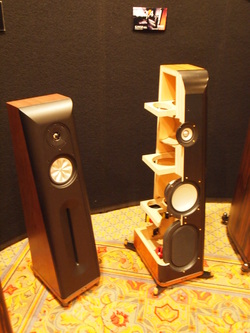 You will probably agree that I have milked the CES franchise for a bit too long as the CES 2013 is in a couple of days... So I thought I would recap here what speakers I really liked or discovered at the Show. I am not going this year, as I am going for a short trip to France to see my family and take care of my children that are or will be in Paris for their studies on an exchange from their Australian Universities. Hopefully, I will have some time (between Cotes-du-Rhone and Camembert...) to research there some more French vintage products and I can entertain you again "on topic! And to stay on my favourite brand, here is a shot of the new Thiel speakers on the Bryston stand (ah,ah, you didn't see this one coming, did you?). The combination of Bryston amplification, 24/192 multichannel live recordings from iTrax and matching Thiel monitors and subwoofers ended up being one of the most sensational demos at the Show. Electrocompaniet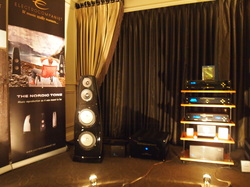 We are all familiar with the beautiful Nordic sound of Electrocompaniet electronics. They evemn make their own version of the OPPO player. But what is less known is their recent foray into loudspeaker design. These fine little monsters are a very capable team and are built as two separate cabinets, my favourite arrangement, just in case you have not noticed already... Very good demo and great conversation with the Director all the way from Scandinavia, who happens to know my ex-distributor in Norway, Martin Viktorin - small world! Kondo + Audio Note Japan - Reincarnation of an ancient art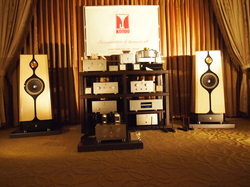 Beautiful... Beautiful to look at, beautiful to listen to, beautiful to talk about... It is the nirvana for a lot of audiophiles in Japan, and for some of us, mere mortals, elsewhere in the World as well. The closest system I have heard from the Pierre Riffaud/Tosca/Ocelia combo (punt intended...) I listened to at Point Musiques in Paris over my last trip. It is craftmanship of the highest order, as well as technically very sound and painstakingly researched and executed. A few kilograms of finesse in a world of brutes - better than chocolate? You tell me. Morel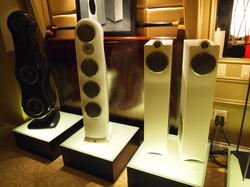 Nothing to do with mushrooms, although these shapes... Morel is an Israeli company more famous for their drivers (I am about to trial one of their tweeters...) than for their speakers, but hopefully this will change as these beautifully crafted products sound as good as they look. Stay tuned! REGA - Another first for BMRs in High End speakers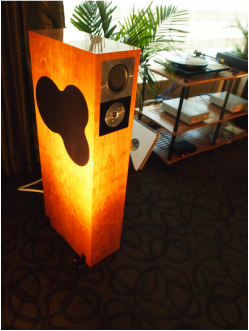 First spotted in Paris on an unofficial release, these speakers are taking advantage of the wide bandwidth of a 4.5" BMR driver to work from 300Hz to 6kHz. Rega has engineered a new tweeter just for the purpose to improve the high end over the BMRs that can go up to 22kHz, but tend to have some ringing over 5kHz. In the bass, they use two drivers of different sizes in separate enclosures for a smooth and extended bass response. Again the BMRs have trouble getting the right level below 120Hz, hence the separate subwoofer arrangement. Copmared to Naim, who decided to reengineer the BMR drivers, REGA uses a standard unit and spent the money on a complex filter and beautiful cabinet. And BTW, it sounds great as well! Waterfall Audio + Tributaries cables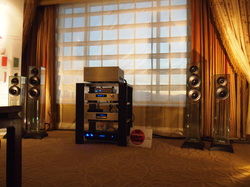 Waterfall Audio have a very good business in the US of A, thanks to a good distributor who pushes the WAF factor into the CEDIA type market and also gets a lot of press in lifestyle and decoration magazines. They teamed up with Tributaries, a relatively new range of high-end cables, where my friend Helma Paulson (ex Export Manager for Audioacess and Harman Kardon) is doing a very good sales job (she could sell ice to Eskimos, really...) and she almost convinced me that these cables were actually make a difference! Maybe I should ask for some samples.... Audiolineaire, Focal and other French ambassadorsAudiolineaire were present with their leathered speakers (unfortunately my photos don't do them justice...so, I won't post any) Focal were hiding in a private suite at the Mirage and couldn't find them (mind you it was lunch time whenI got there, so maybe that's where they were hiding...) and Cabasse were absent but for their Japanese distributor who distributes Devialet in the US - go figure!
In the New Year, I will give you a (short...) report on T.H.E. Show which is held concurrently at the Flamingos. In the meantime, I thank all of you that ventured to this site, some more than once - I love Google Analytics - and I wish you a very Happy New Year and many happy returns in 2013. I will try my best to continue to entertain and inform you. See you in January! 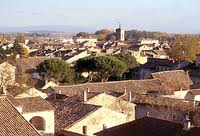 Roquemaure is a picturesque village on the west bank of the Rhone river, drinking distance from Chateauneuf-du-Pape, Lirac, Tavel and many more famous wineries - including my favourite Cotes-du-Rhone: Vidal-Fleury! Christophe Bedel, the enthusiastic and knowledgeable owner of related website www.hifi-vintage-audiophile.fr has just been in contact with me asking if I could promote this event on my blog. I couldn't refuse! In fact, I am trying to convince Greg Borrowman from AHM, who will be in France at that time visiting Focal and hopefully Waterfall Audio to stop by and report on the only fair of this type I know of in the South of France! This is good timing too as a number of Festivals are happening in the region over the summer period, with usually a fantastic array of live concerts to choose from - Avignon being the most famous of them, but Uzes, Carpentras, Bagnols sur Ceze, La Roque d'Antheron ( a must!), Aix en Provence, Orange and Nimes all competing for your time (and good money..) So, if you are one of 43 out of 100 Australians out of the country at any given time, or one of my readers in any of the 70 countries or so where I have an audience, and if you happen to be in Provence for the European Summer, just drop by and have a look at the fantastic collection of vintage Hifi that will be on display and for sale! I will update this post with an exact address as soon as I get it, but if your French is good enough, then visit Christphe's website: www.hifi-vintage-audiophile.fr The cabinet As previously described in my last post, the cabinet was designed as small as possible to match a MIDI system and big enough to allow enough bass. The final dimensions were set as 200x200x150mm, giving us a 3.9 litres internal volume. The cabinets were provided as a mirror-image set. This is a bass-reflex arrangement with a 2.5cm diam, 4cm long port generating a -6dB point at 70 Hz. Because the voice coil is longer than the standard version, one can adjust the bass control on the preamplifier (sacrilege...) and extend the bass output down to 50 Hz without distortion at normal listening level in a small room - which was our target market to start with. We will discuss in a later post how we increased the bass output with the addition of subwoofer(s) We had been looking at various materials to build the cabinet, and apart from the obvious MDF, we wanted something that, once varnished, would show the material itself, so we settled on a very dense marine birch plywood, 15mm thick. We shopped around for a cabinet maker and Philippe Lesage recommended we talked to Jean-Paul Guy of Guy HF in Bourbon-Lancy, a small town in the centre of France, not far from St-Etienne, famous for its manufacture of weapons, and for us audiophiles, where Focal-JMLab and Jacques Mahul operate. Philippe had said to me that Jean-Paul was rarely taking new clients on, but that my design might interest him. It is quite a trek from Paris to Bourbon-Lancy, but after a few phone conversations, I decided to go with a pair of prototypes made in Paris. Jean-Paul asked many questions, listened to our product, and started suggesting a few modifications/upgrades and manufacturing tips: We were in! At the time, Focal had started 4 years before and was beginning to be a serious client for Guy HF, so much so that it ended up taking 49% of the shares in 2003 and bought the company over when Jean-Paul decide to retire. He is still a technical consultant and the factory is making the top of the range from Focal-JMLab today, as in the Utopia and avatars. One thing that Jean-Paul was an expert at, among other things, was the varnish: we never found anybody that could do a varnish that was not shiny, but smooth as an anodised aluminium finish. That gave our speakers an elegance that nobody else could match at any price. The filter
We chose a Linkwitz-Riley configuration because this 12 dB per octave crossover is designed to solve the problem of centering the main lobe of the forward radiation pattern of a two-way speaker system. This crossover is unusual in that each filter is down 6 dB at crossover (in this case around 5400hz, to avoid the resonance of the tweeter and take advantage of the full range of the bass/midrange driver) and that the two drivers are actually "in phase" at all frequencies when the drivers are wired in opposite polarity. That is, even though the filters have their own characteristic phase responses the phase difference between the two output signals is the same at all frequencies. As a result, each filter section has the same group delay. This crossover is recommended over the 2nd order Butterworth type due to its accurate summed frequency response and forward pointing main lobe. We also aligned the two drivers physically to adjust the time delay between the tweeter and bass/midrange driver. This also gave the cabinet its typical look, showing the structure of the plywood on the edge of the "pyramid" supporting the main driver, a very ancient Egyptian concept. This eventually translated into the name and the logo of the company. Here is a schematic of the filter and a photo of its implementation: |
AuthorBorn in France, well travelled, relocated to Sydney in 1997. Archives
July 2023
Categories
All
|
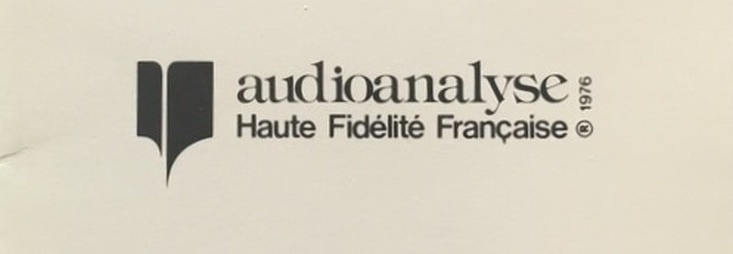
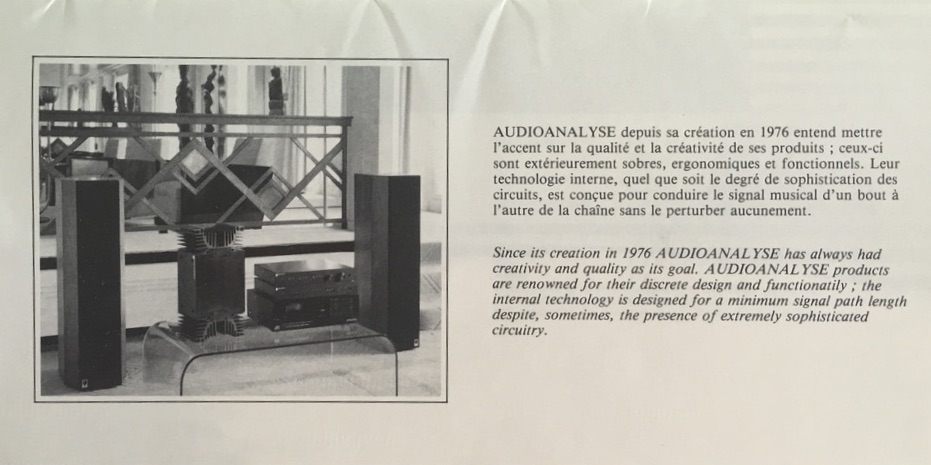
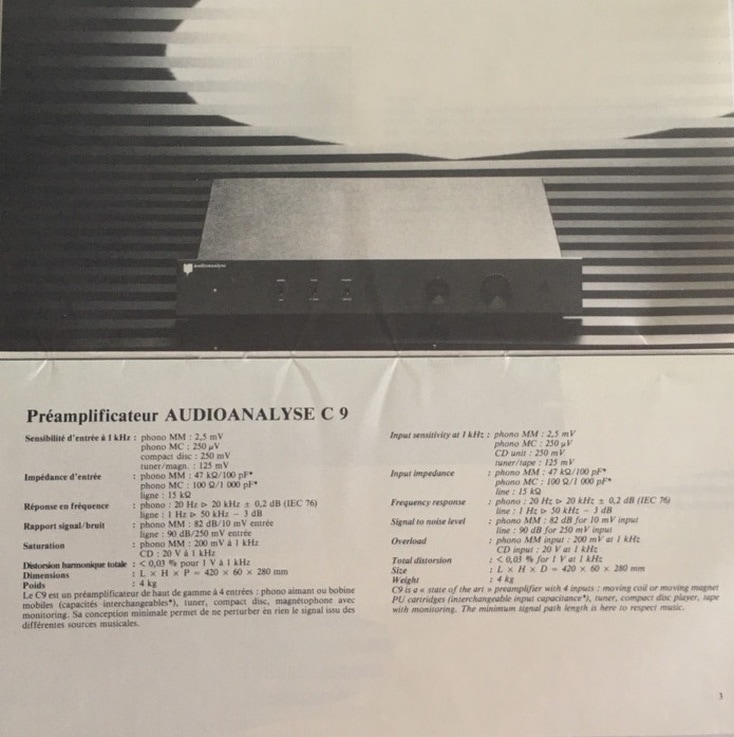
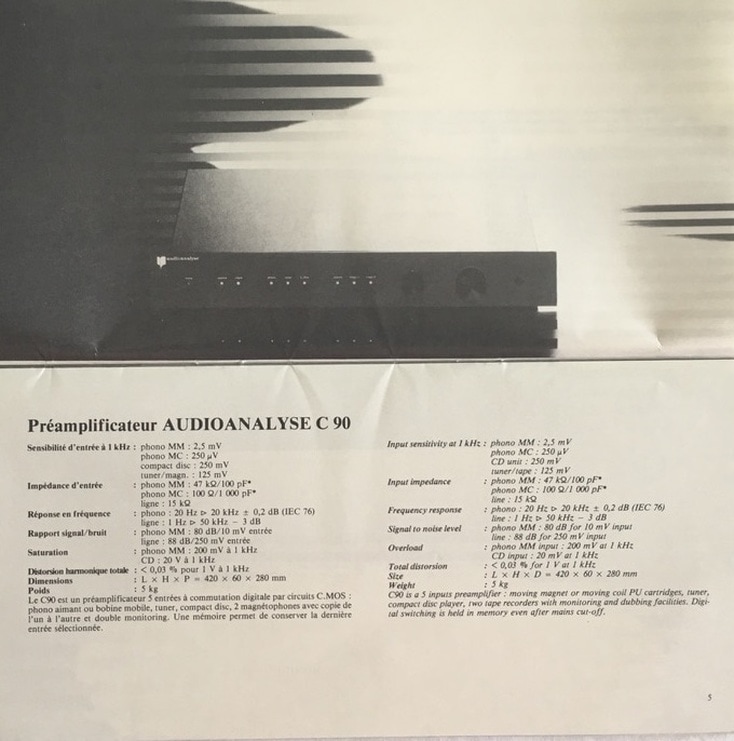
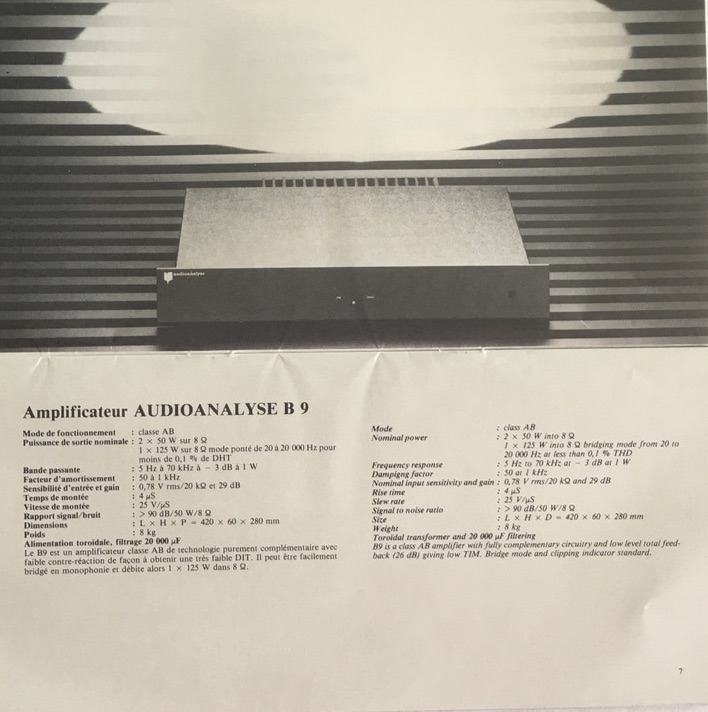
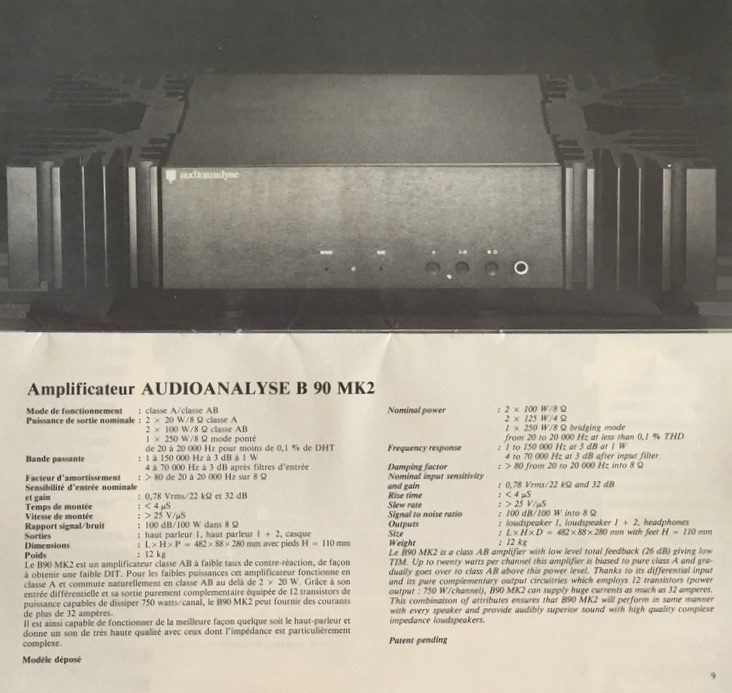
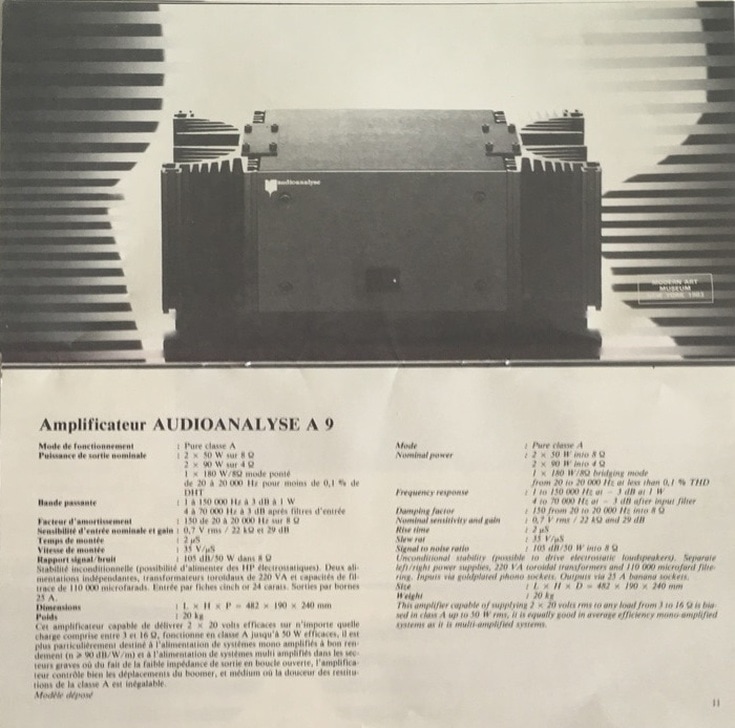
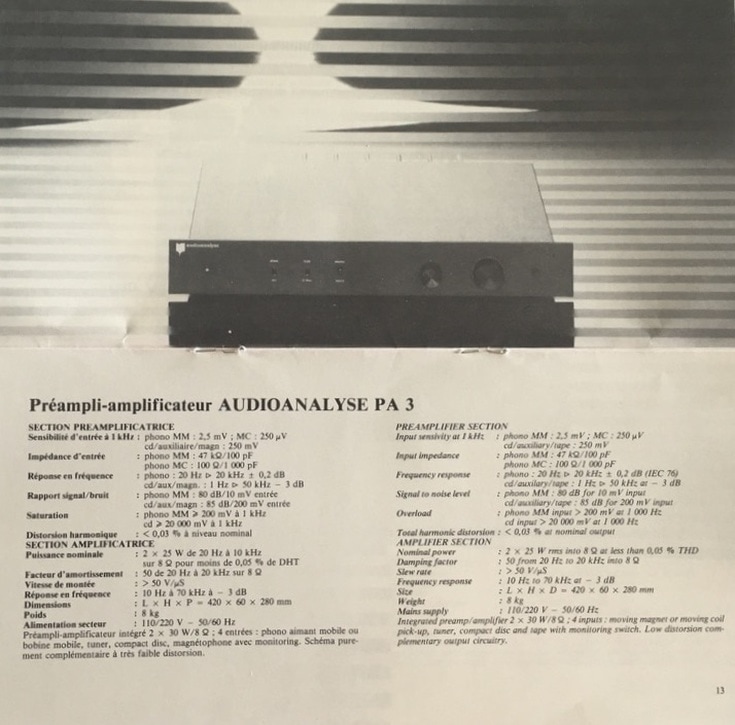
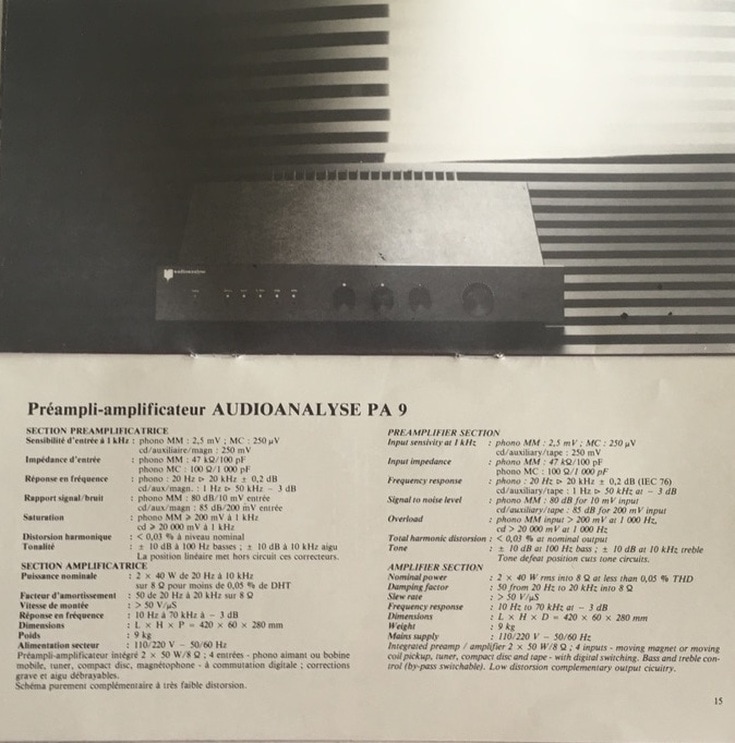
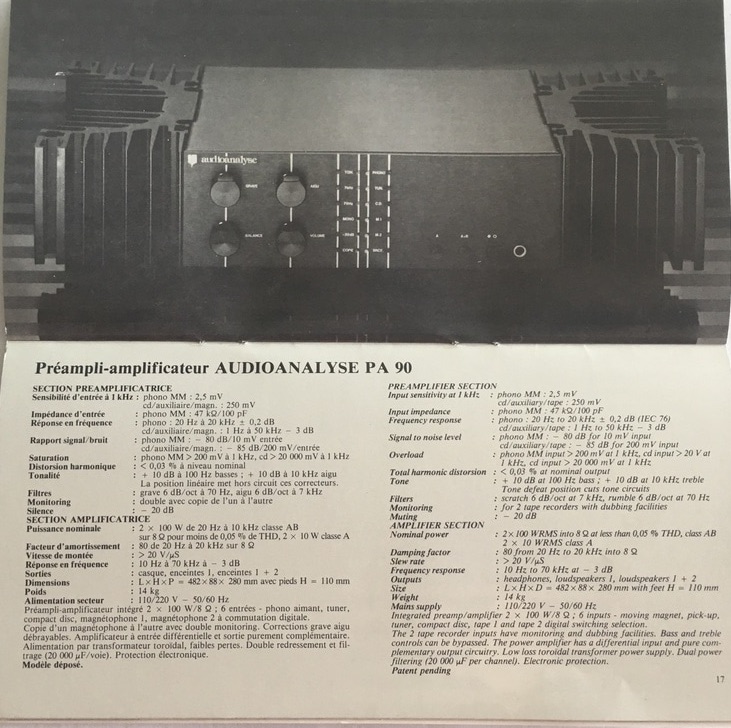
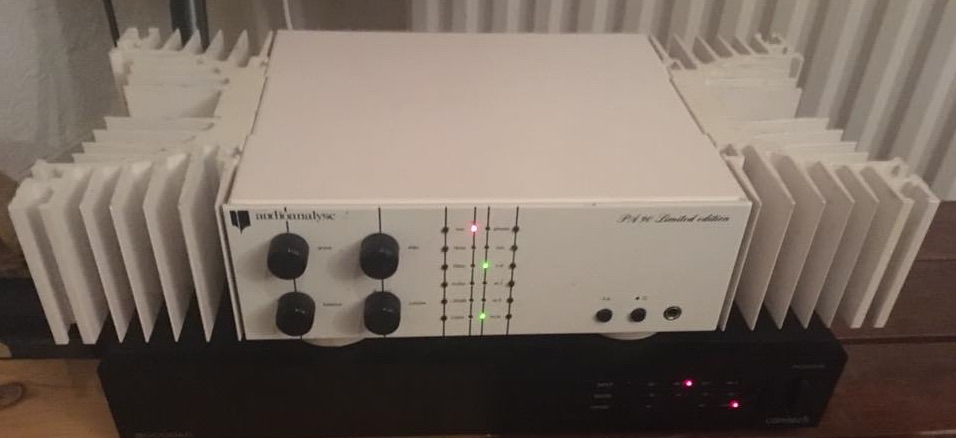
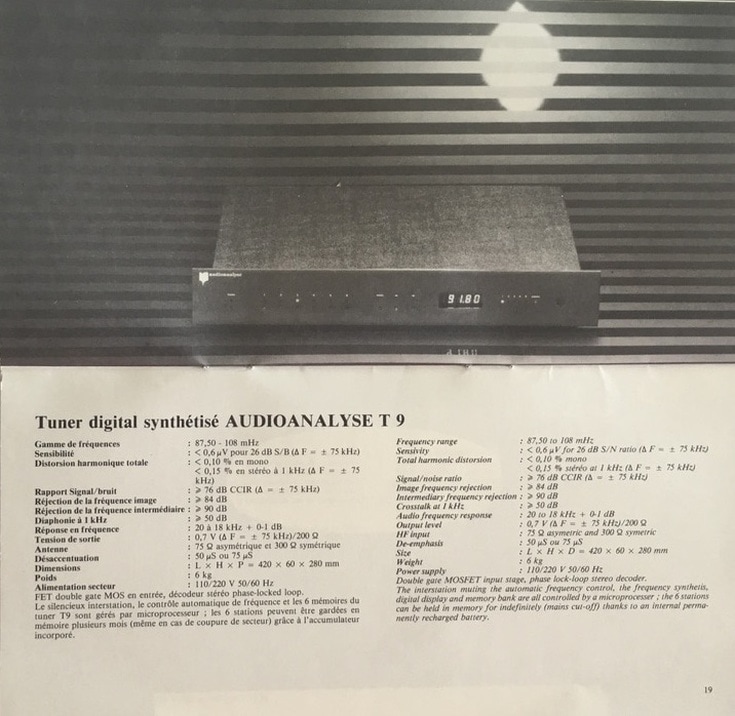
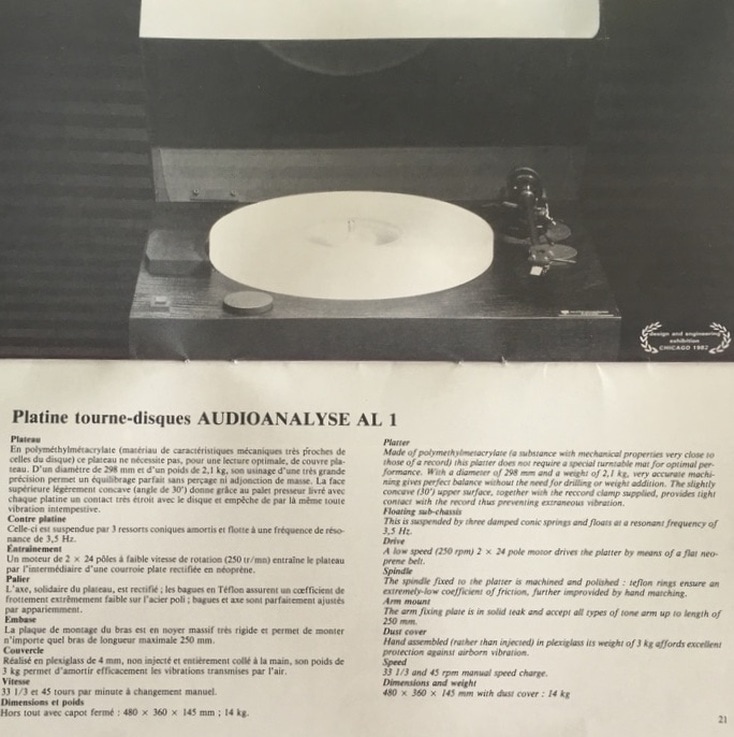
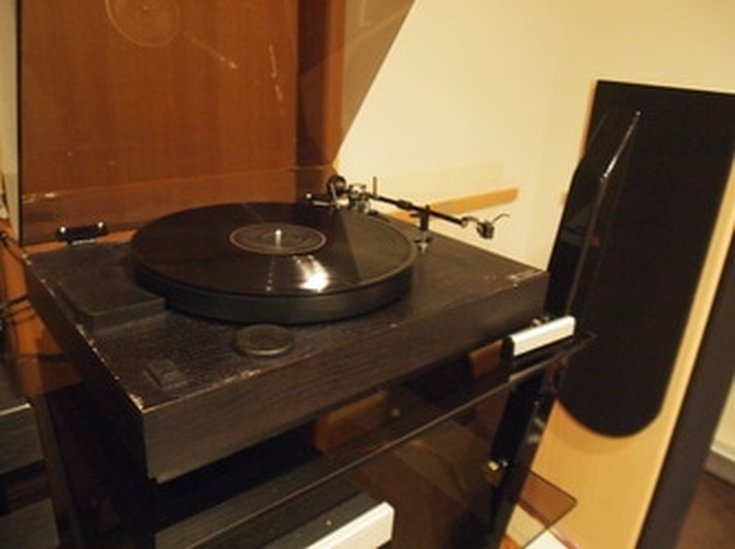
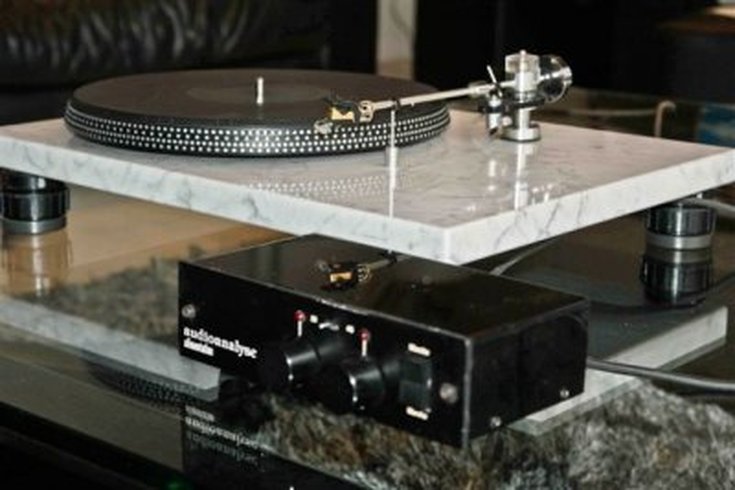
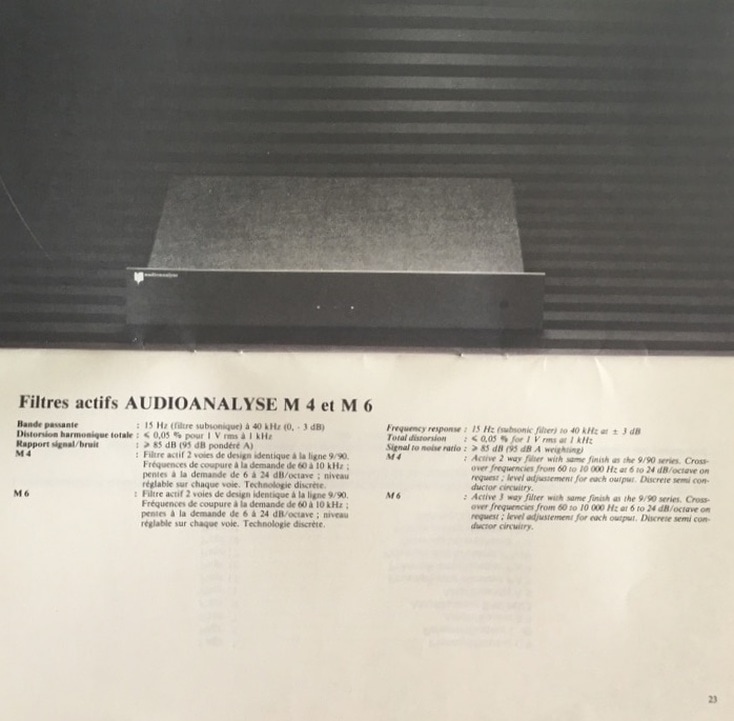
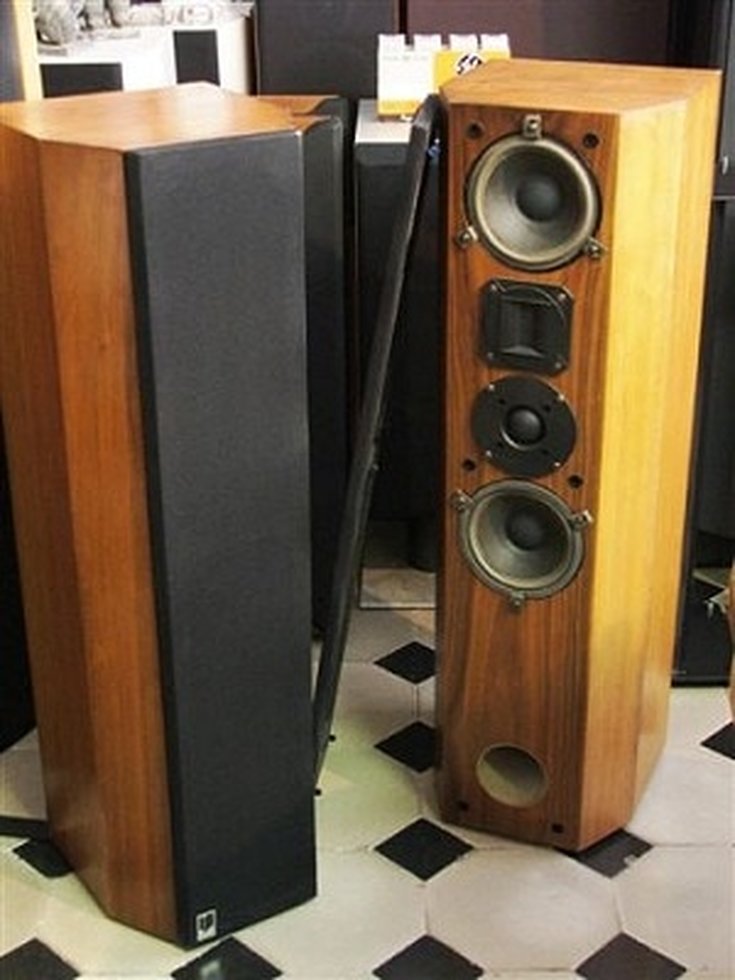
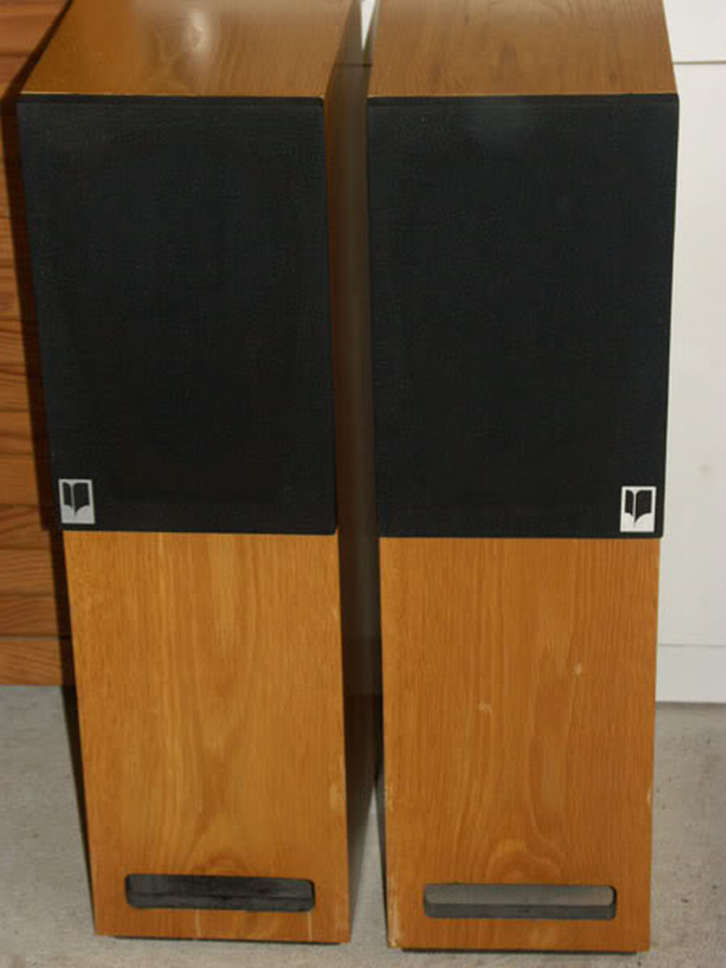
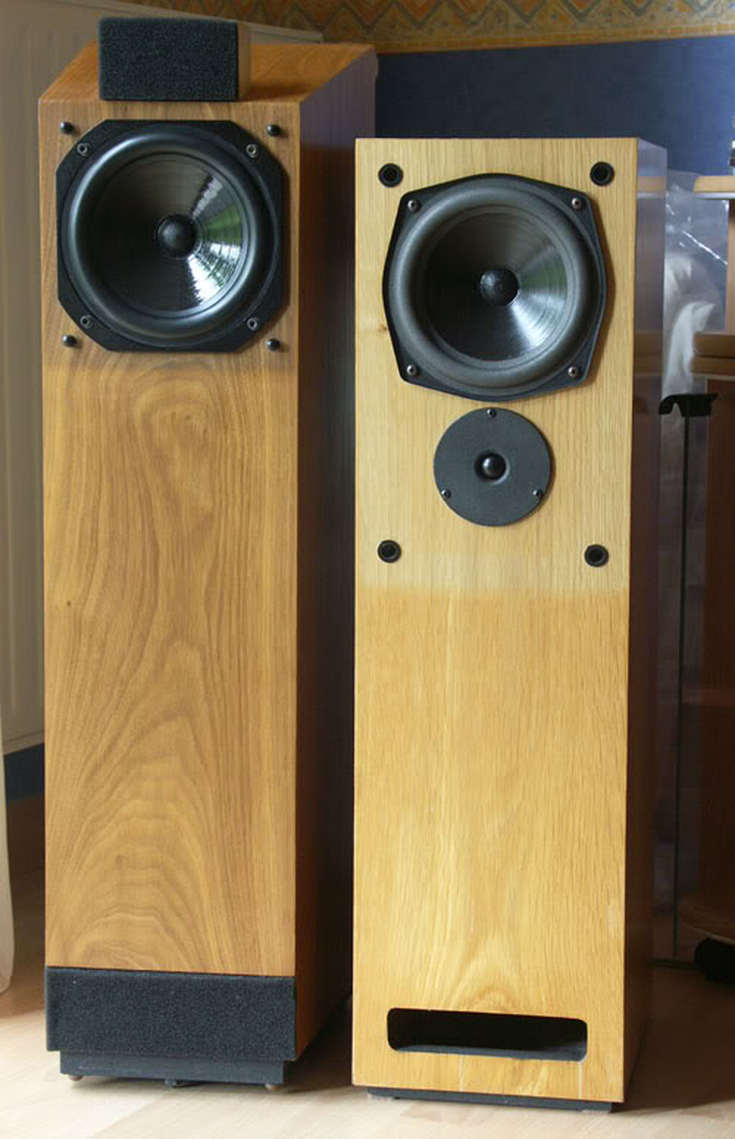
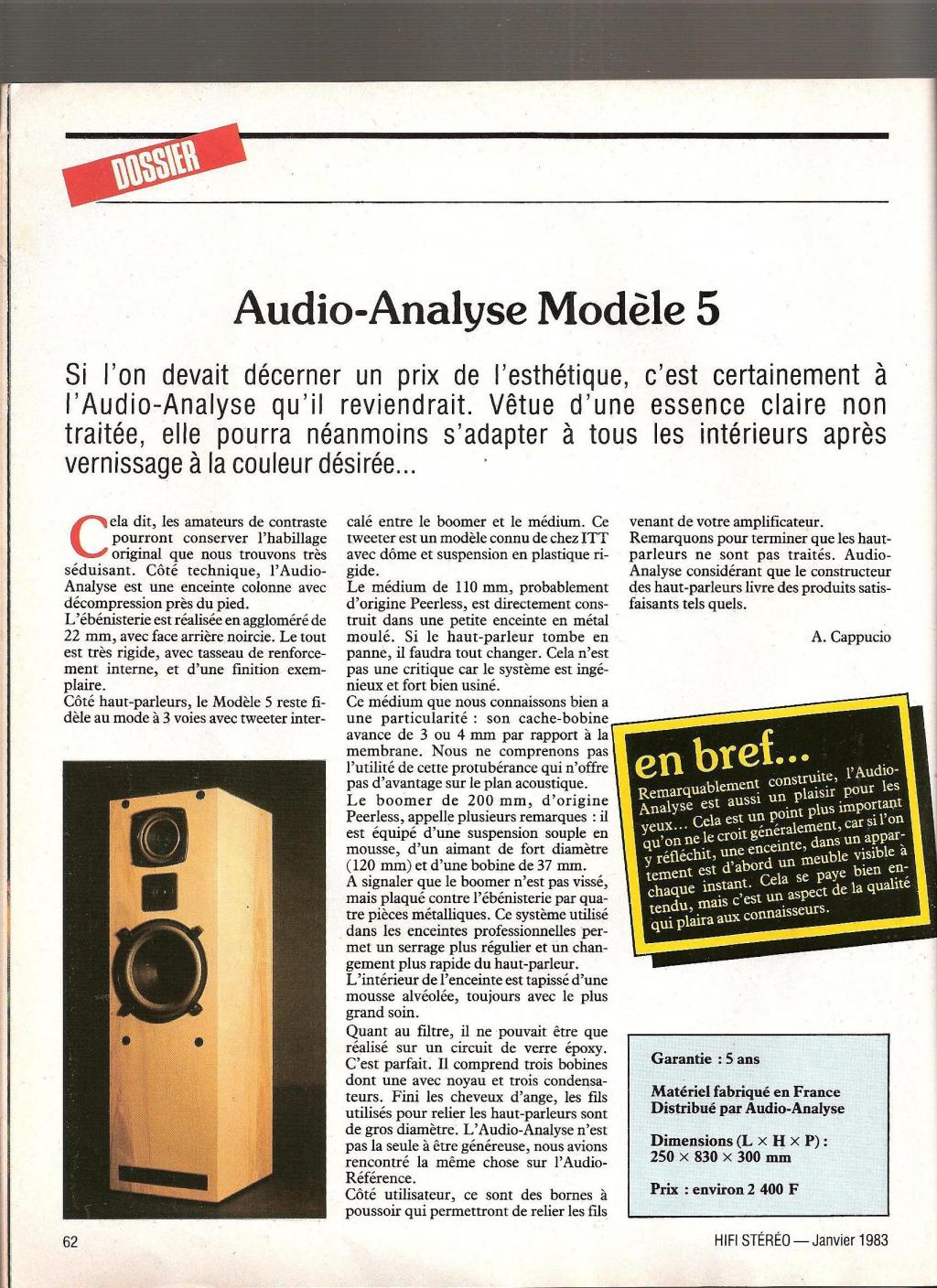
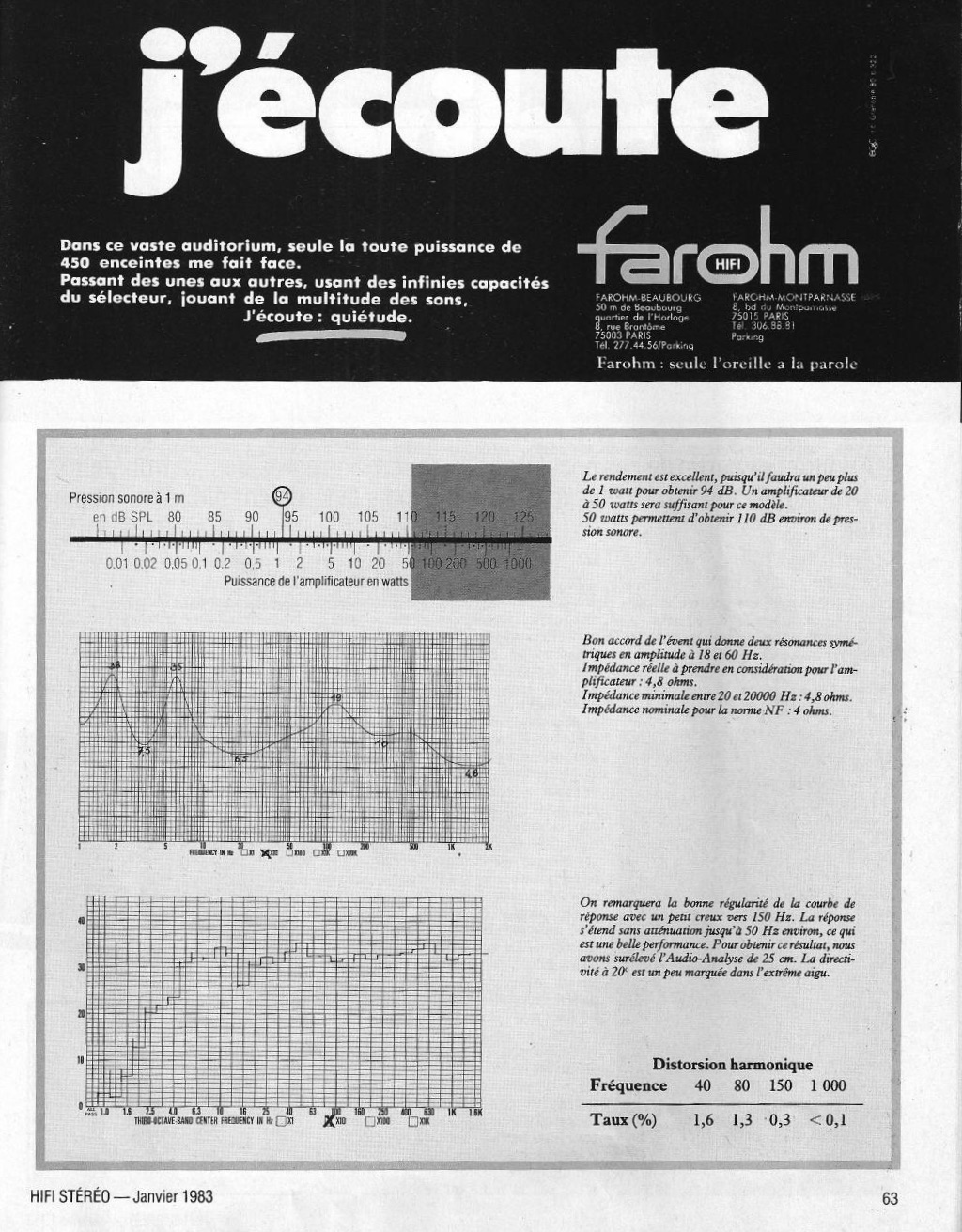
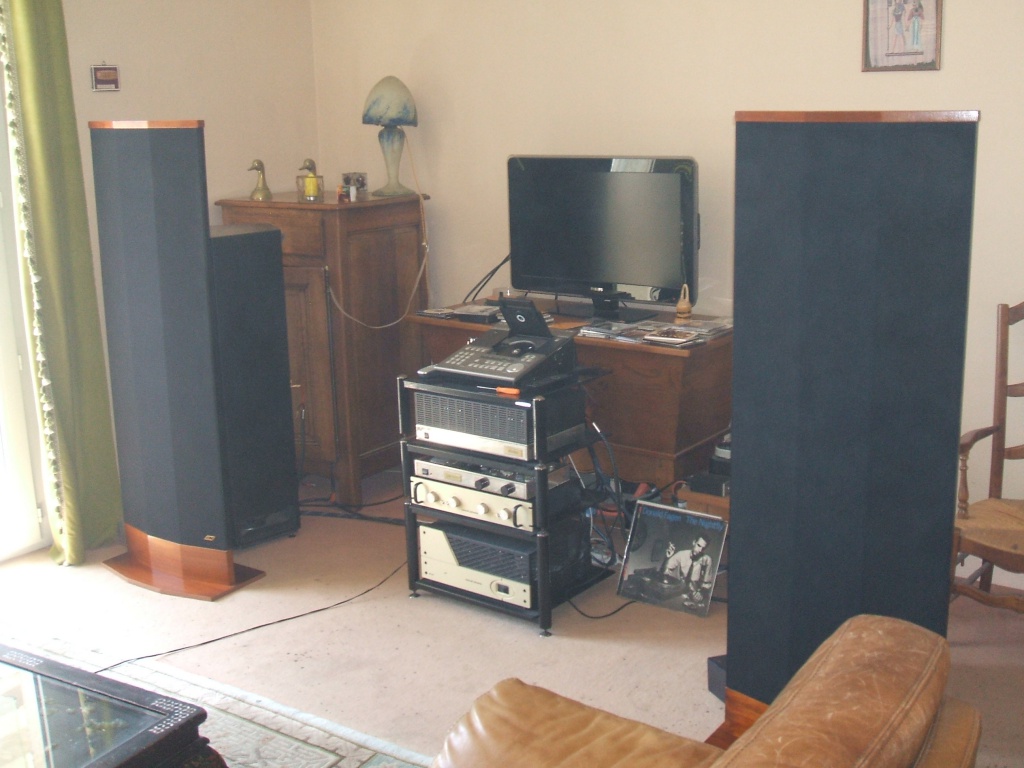
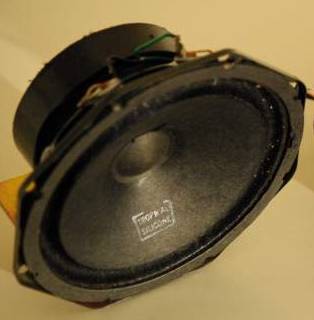
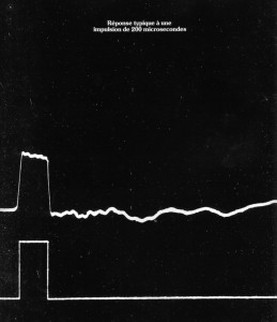
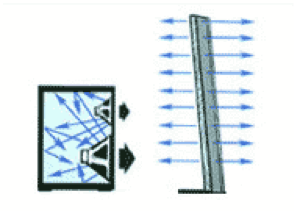
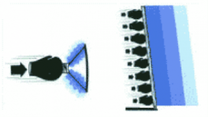
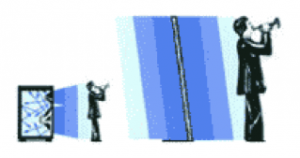
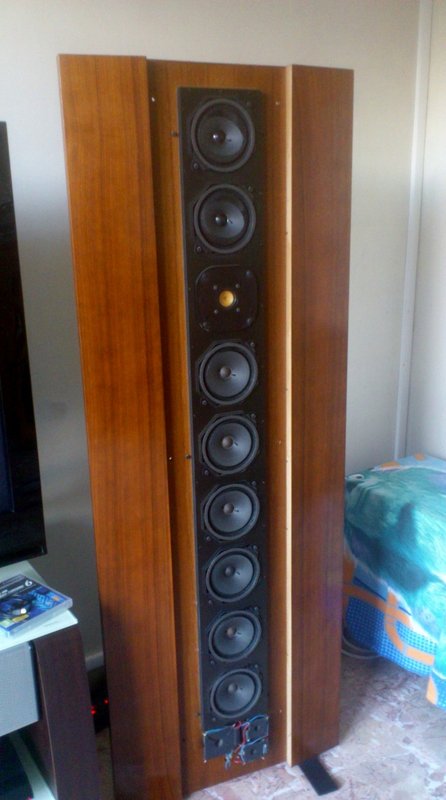
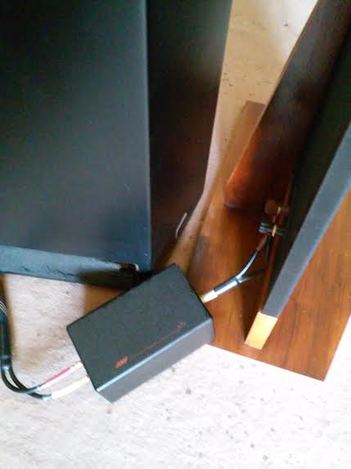
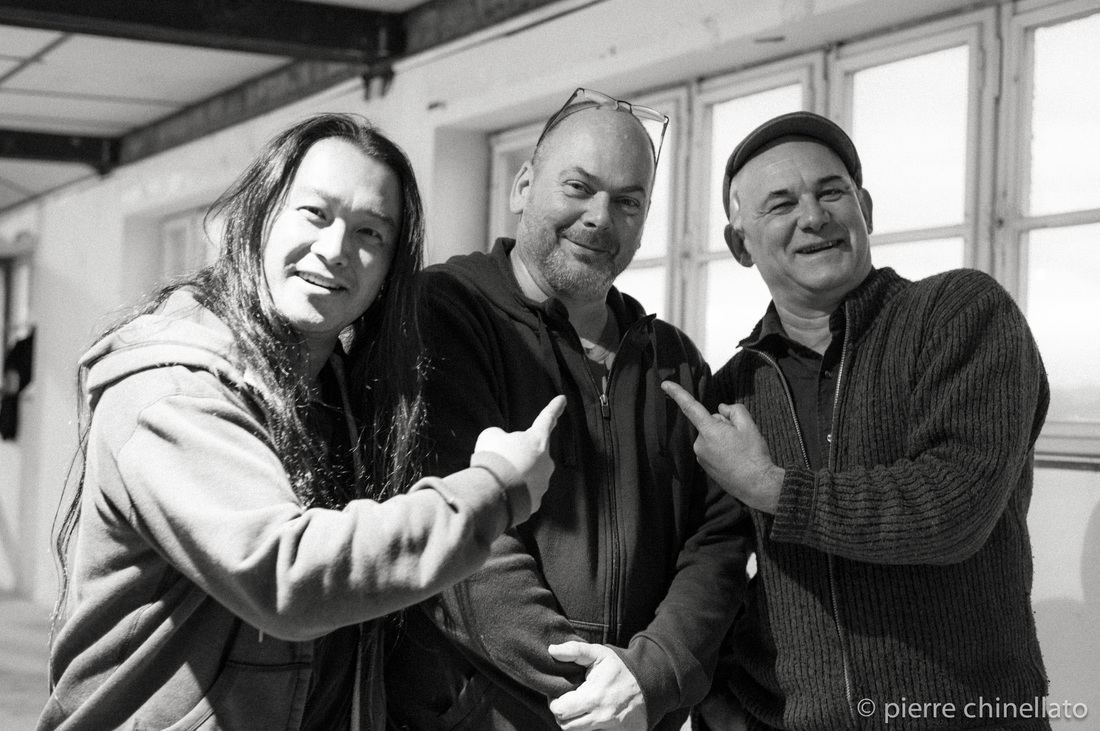
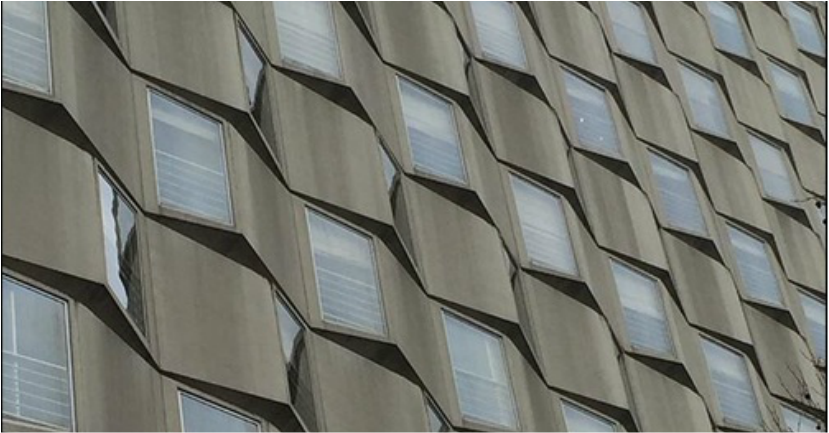
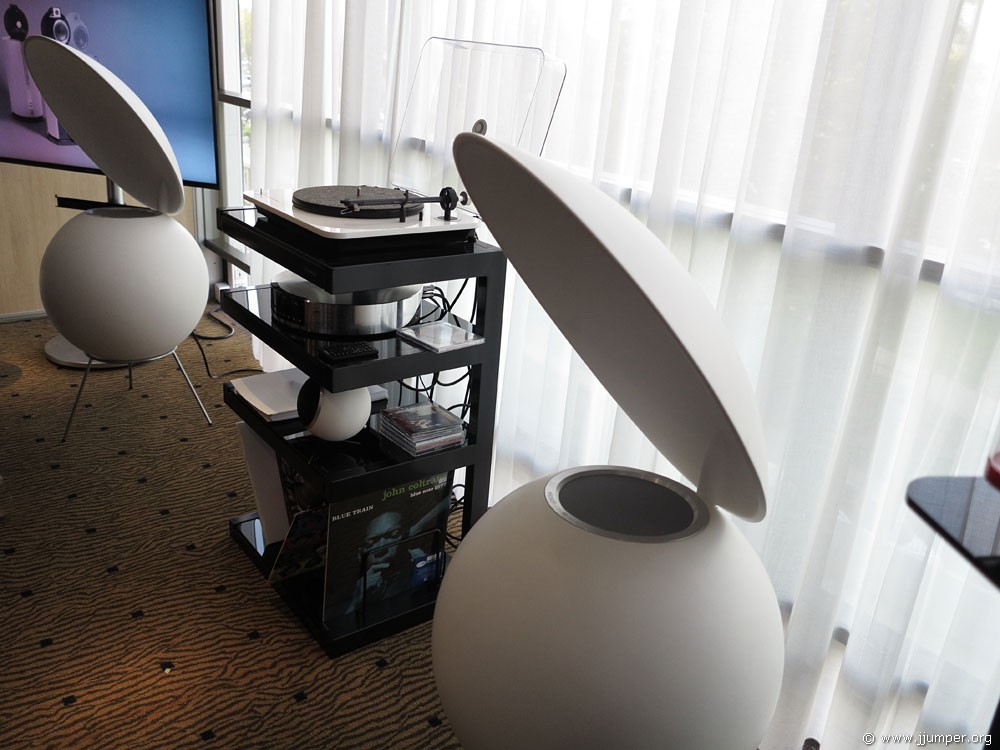
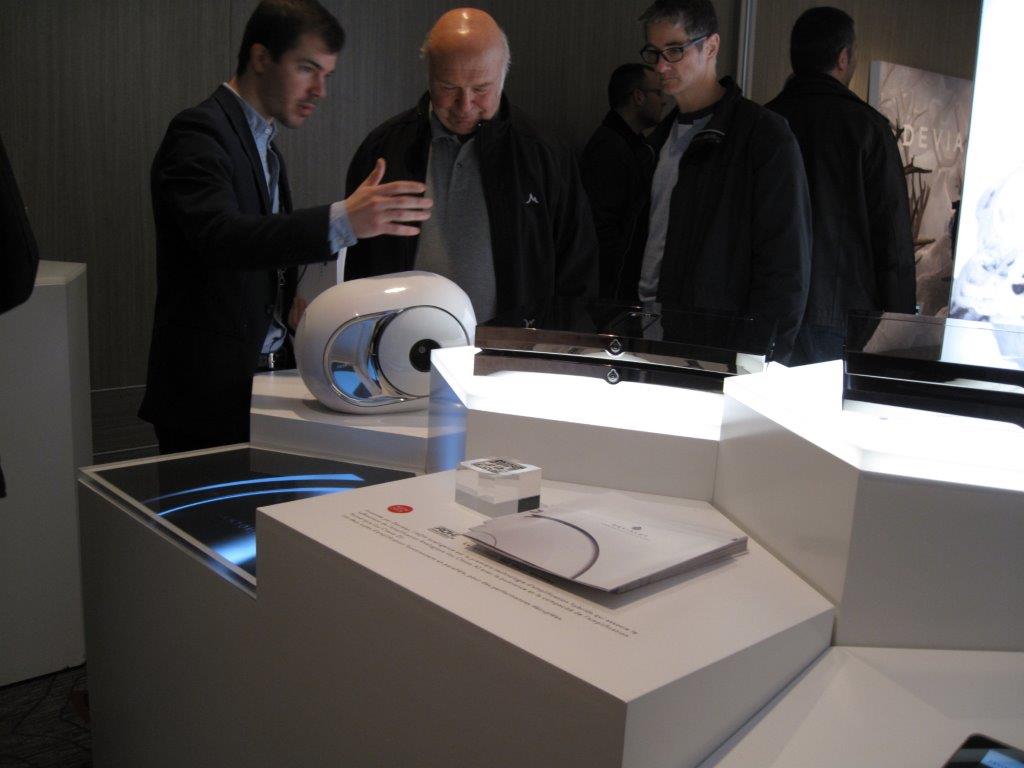
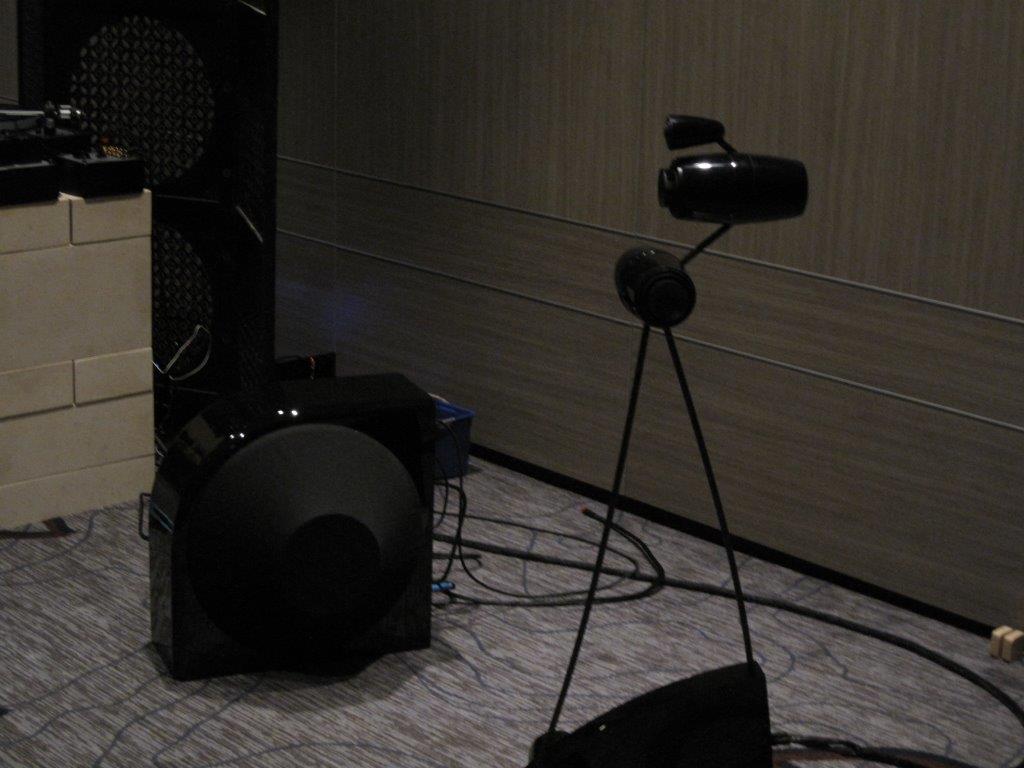
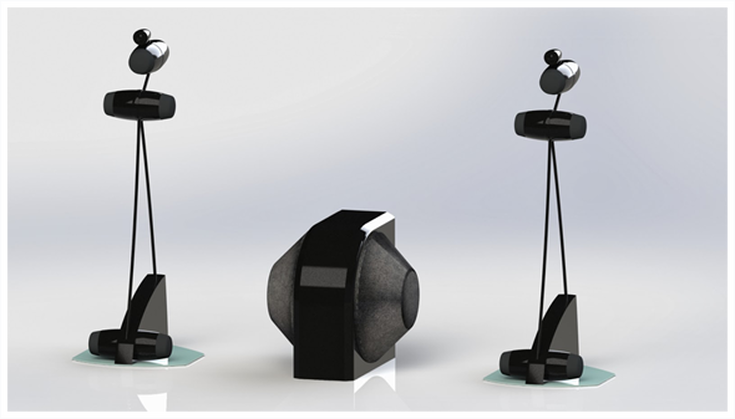
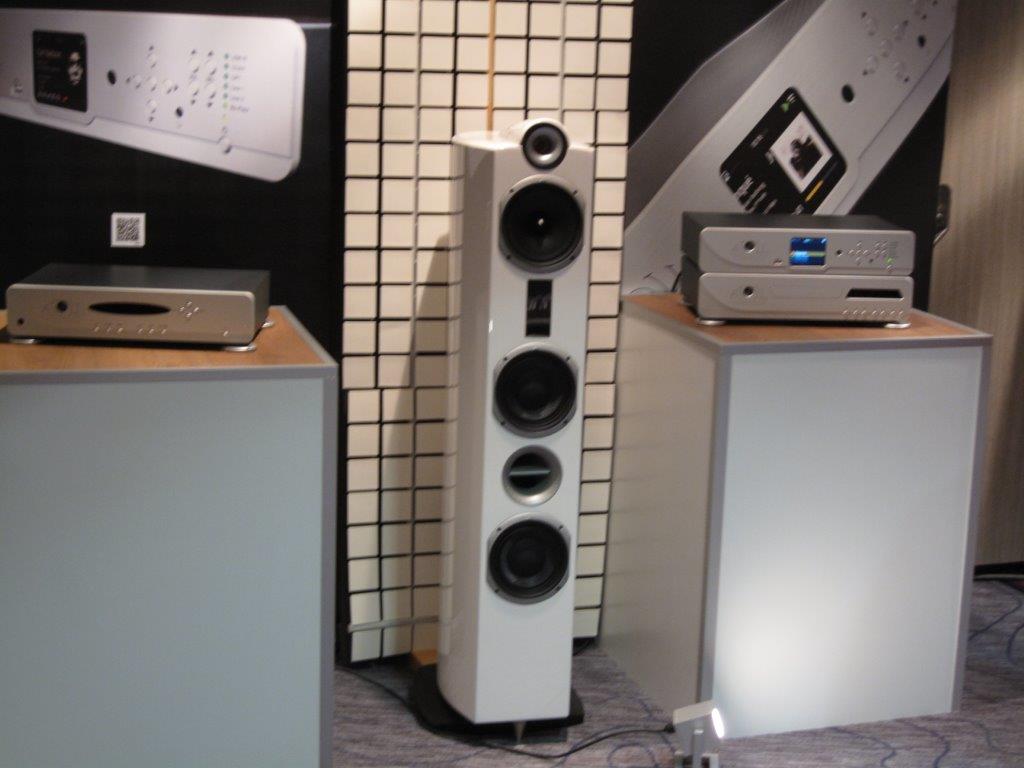
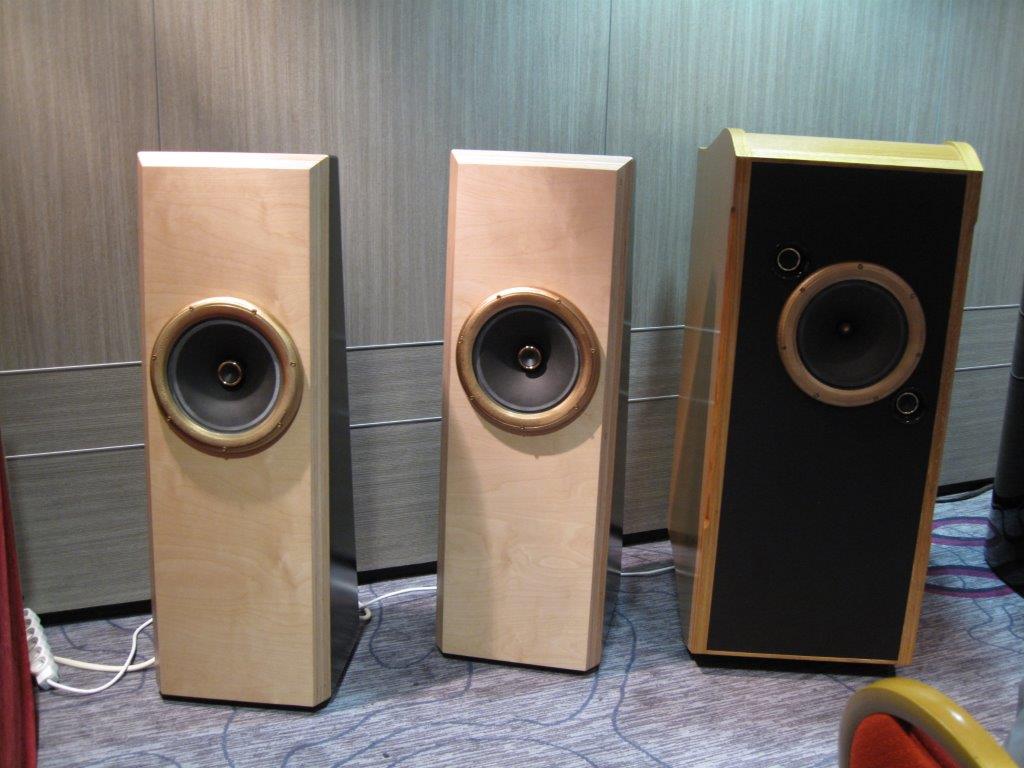
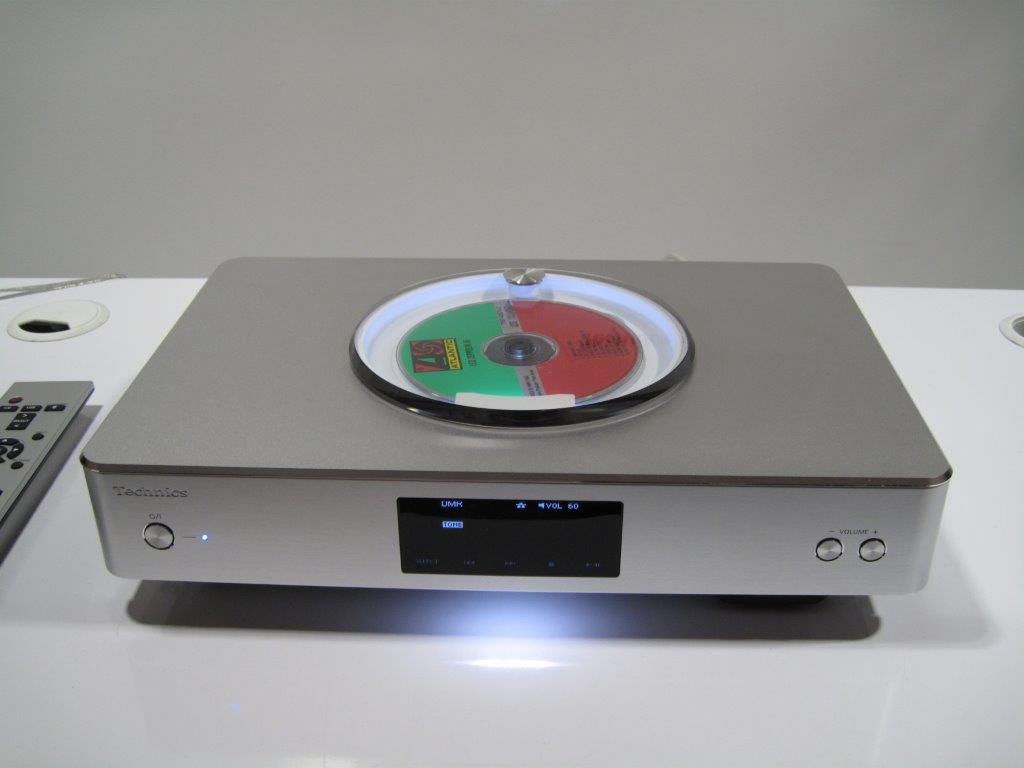
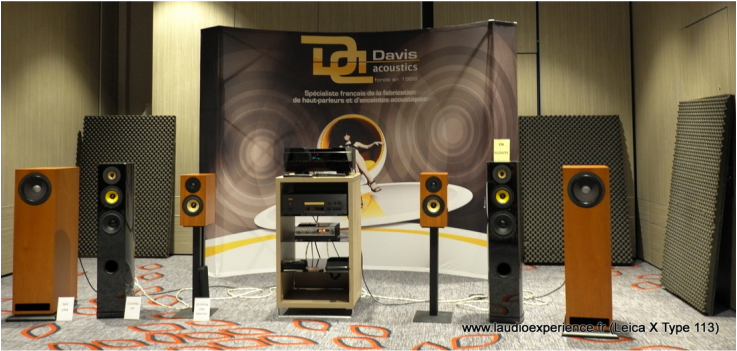
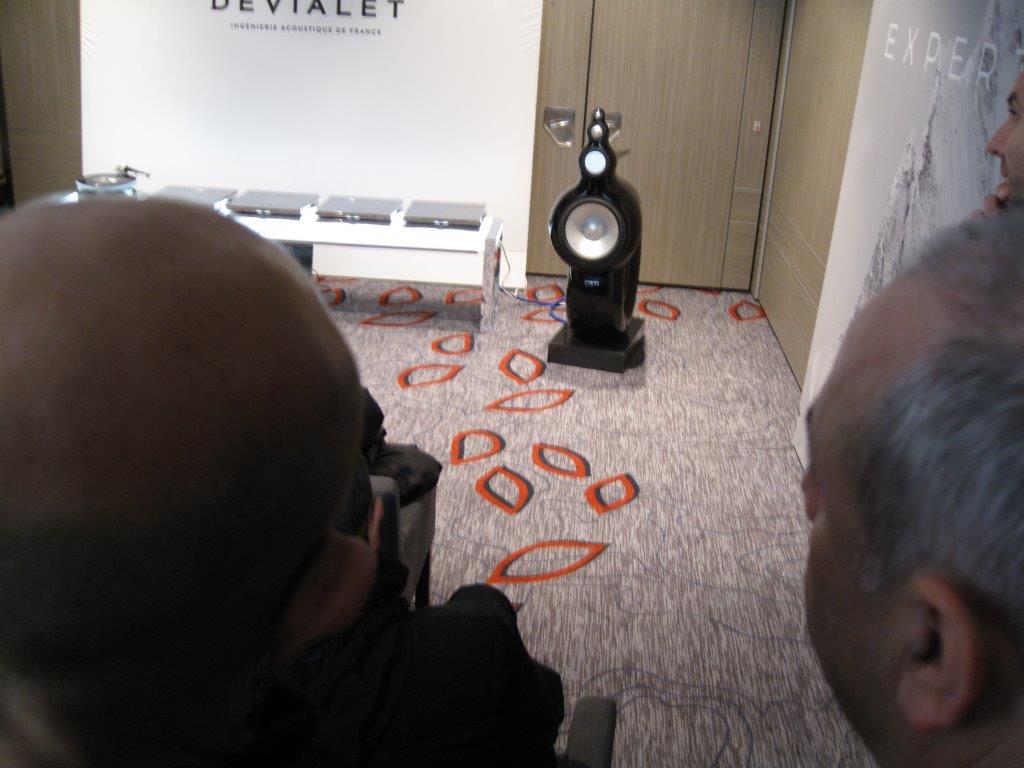
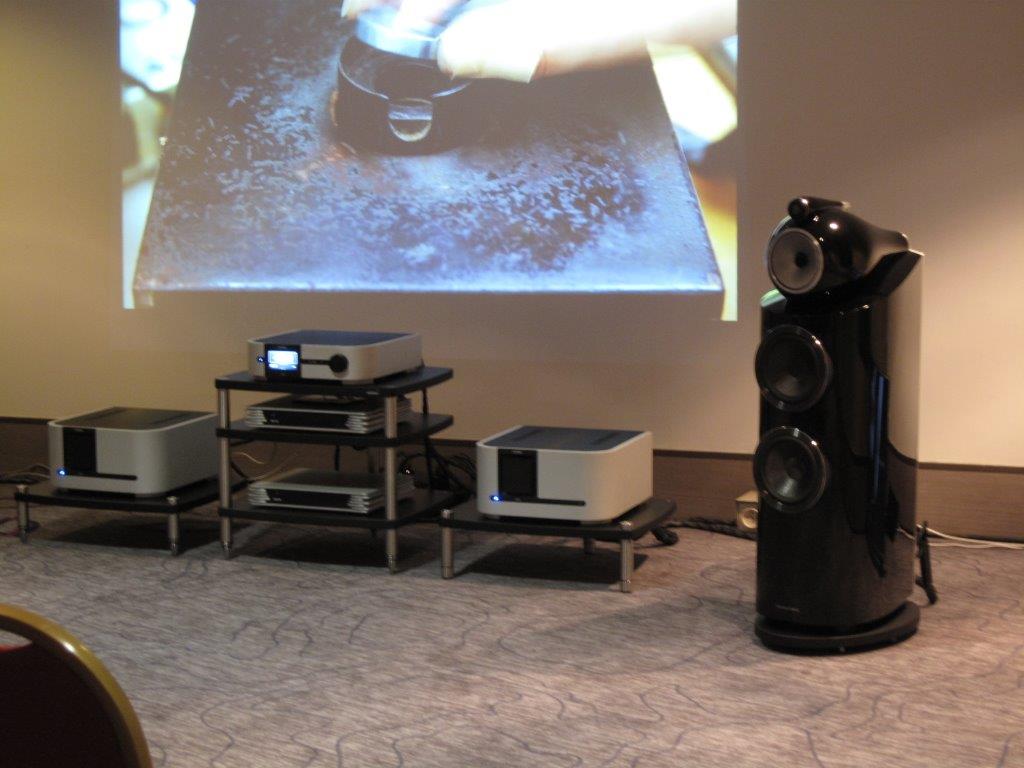
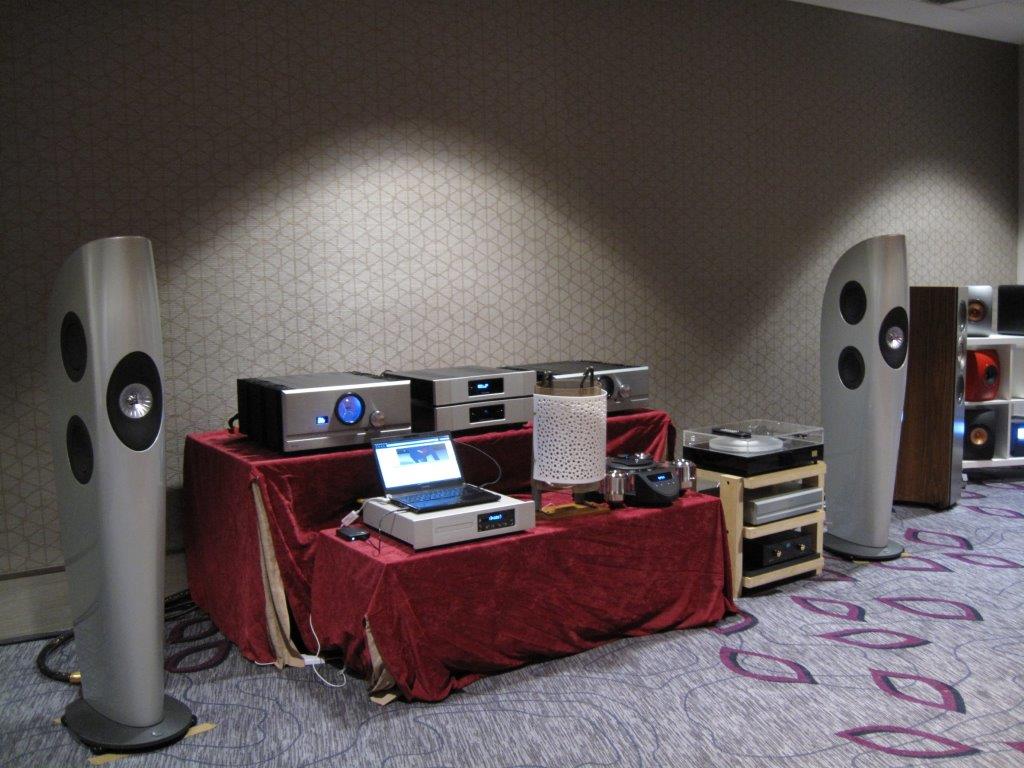
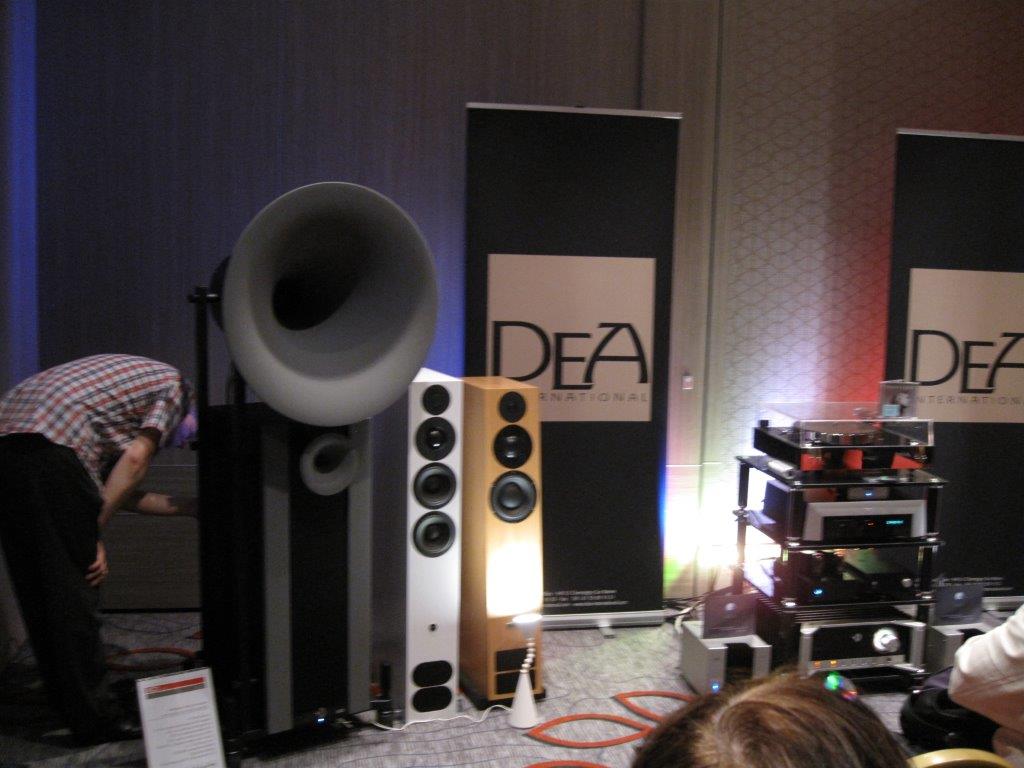
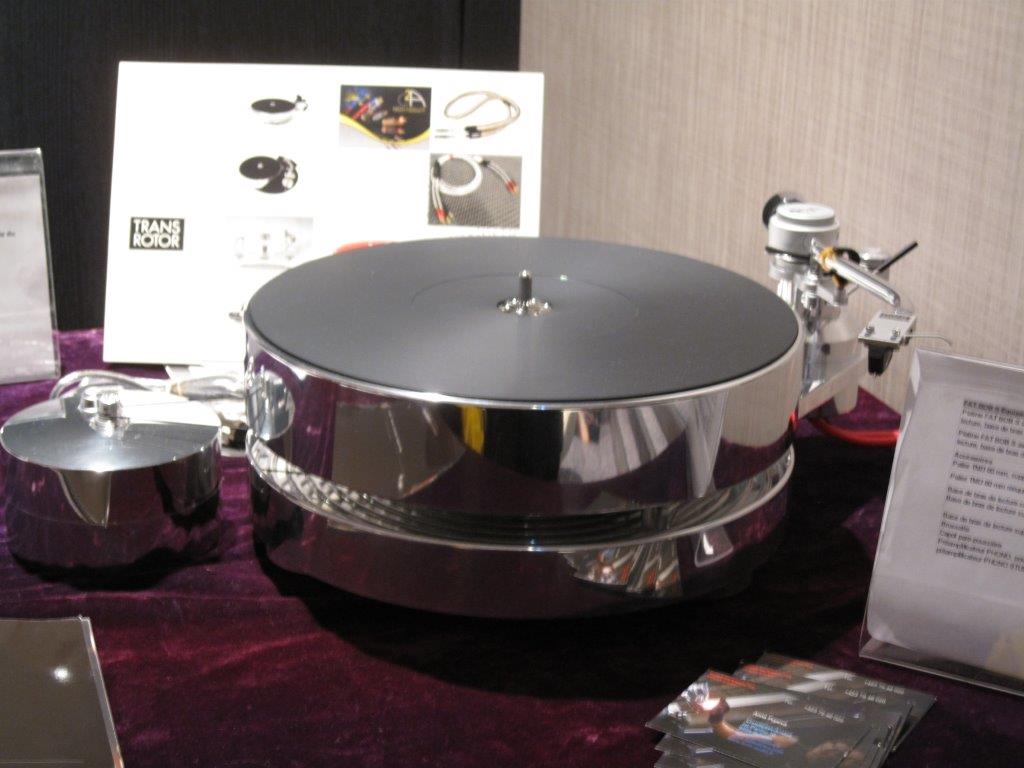
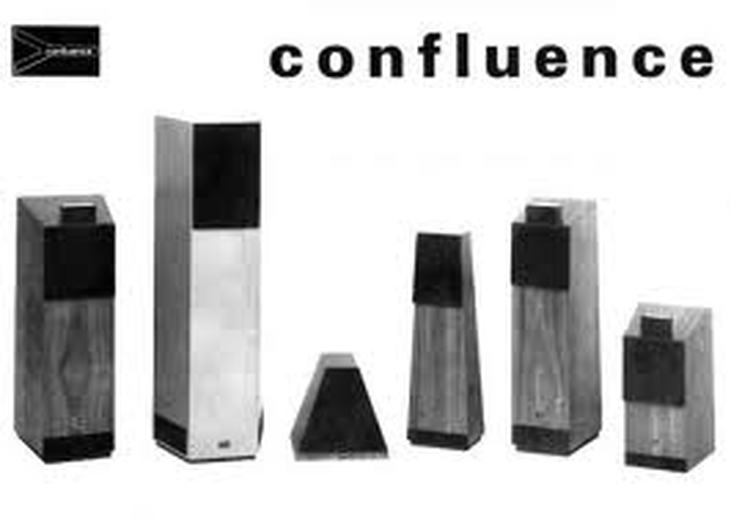
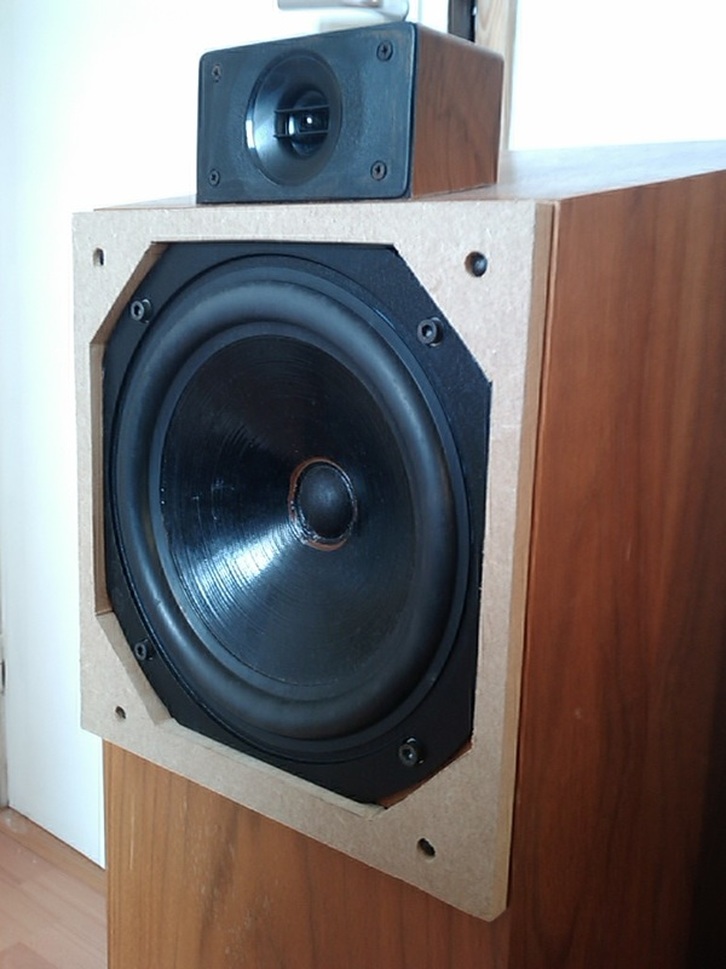
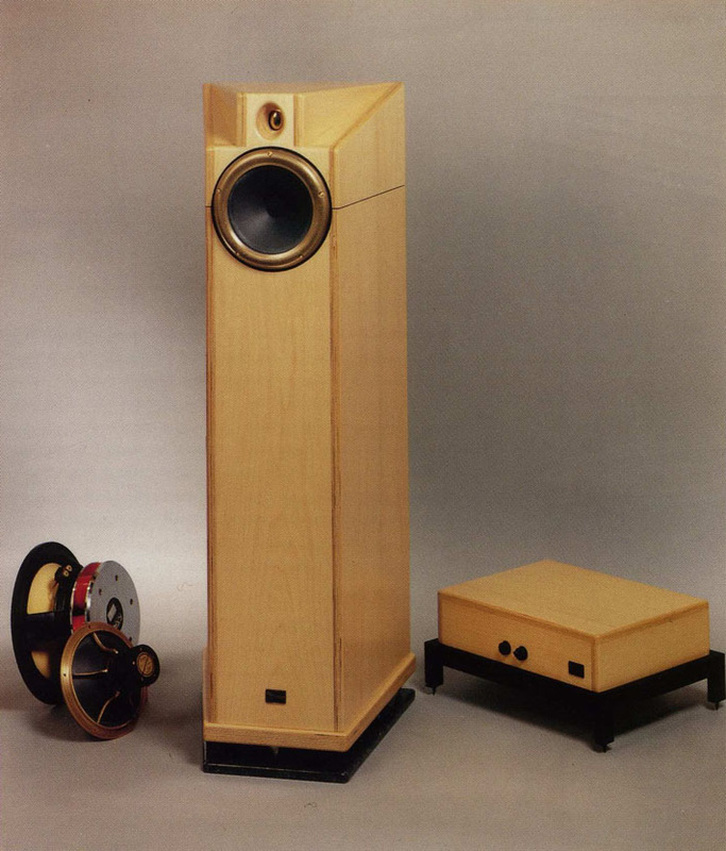
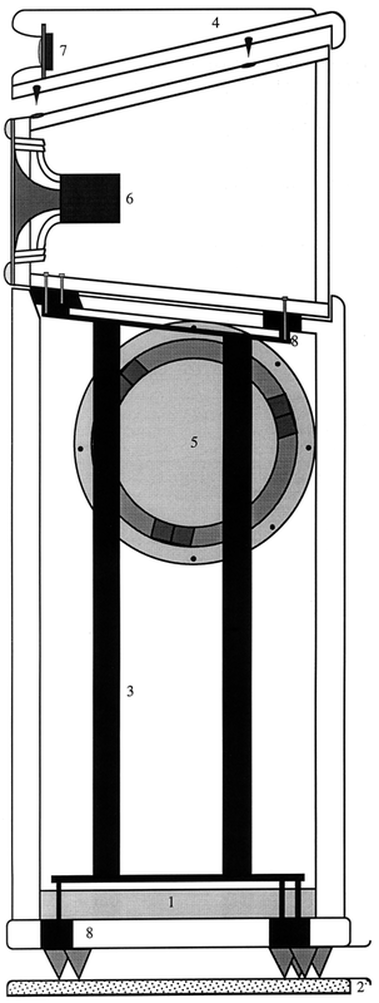
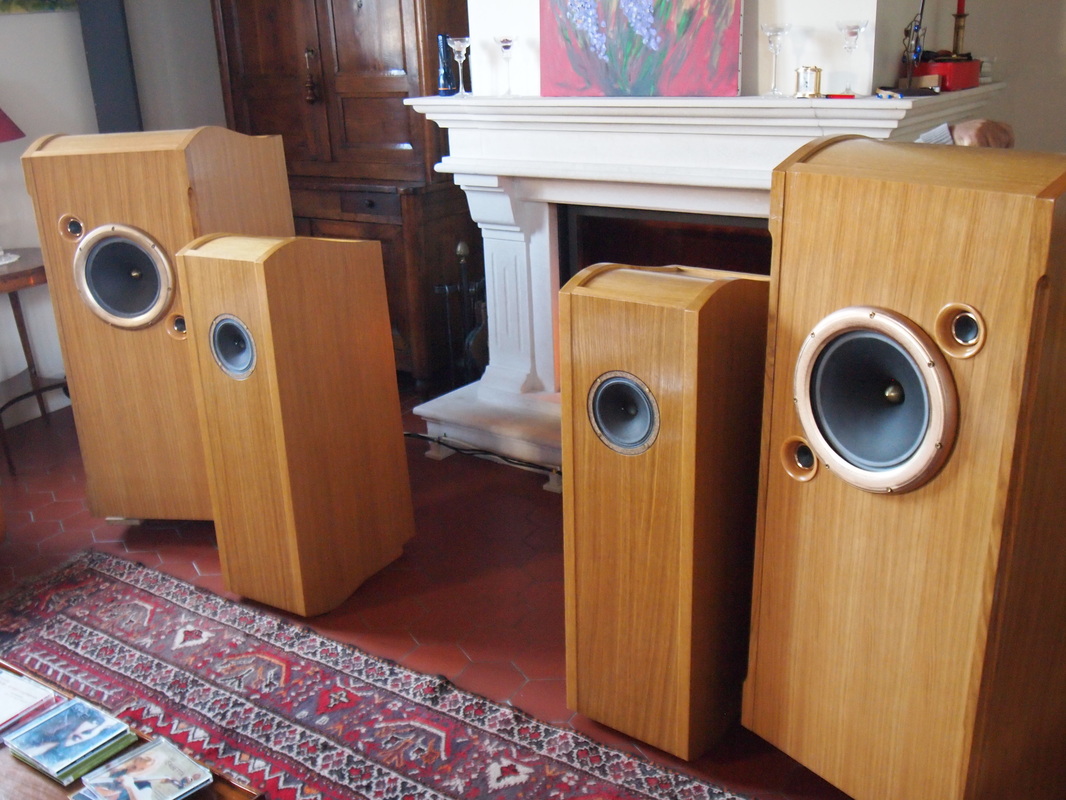
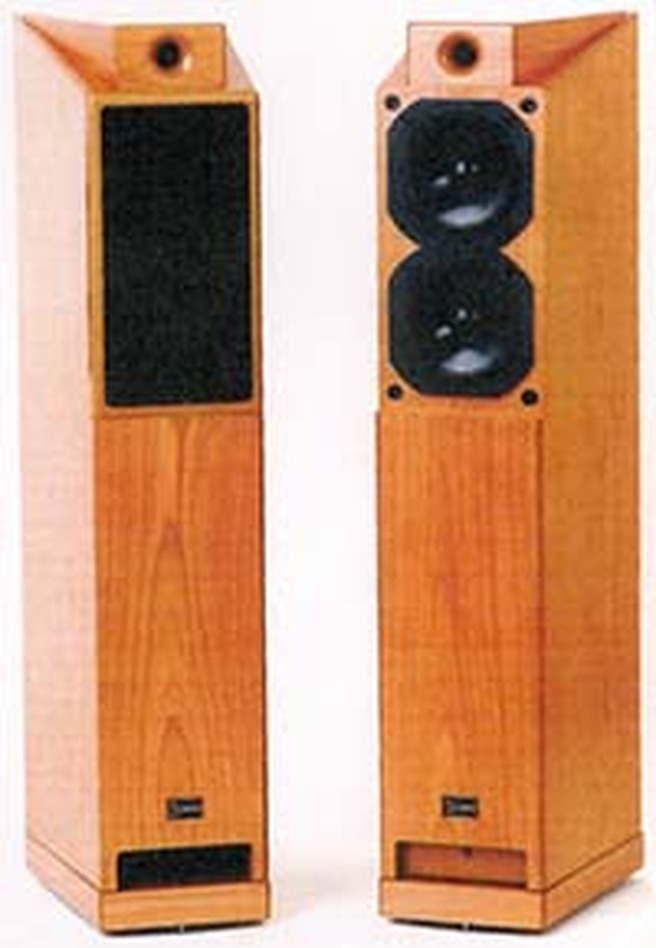
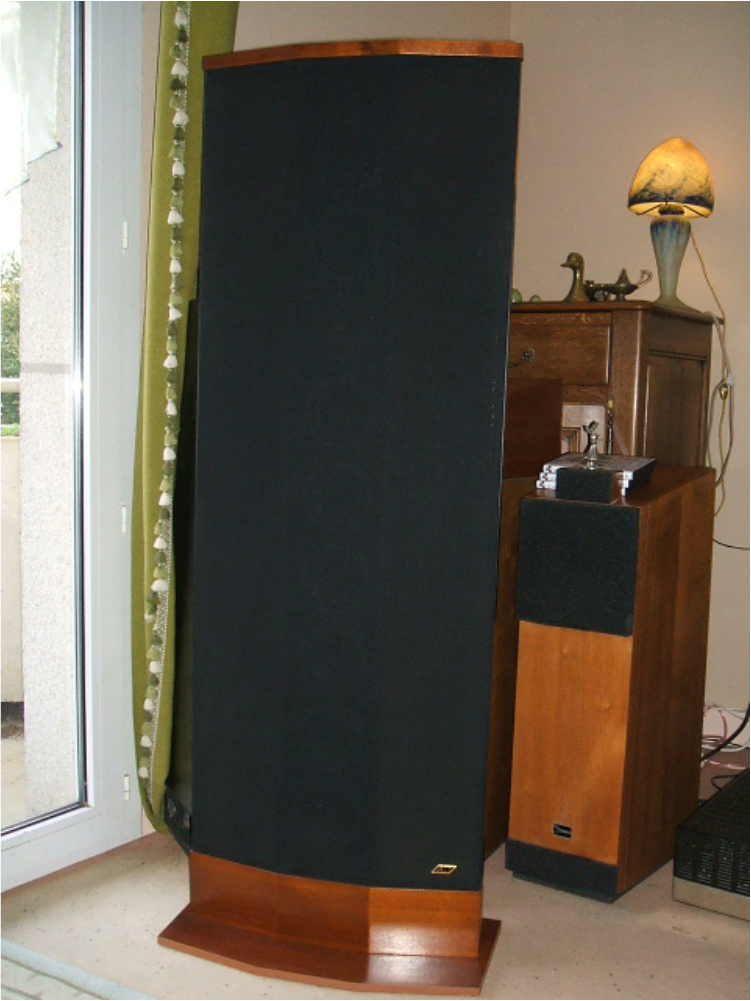
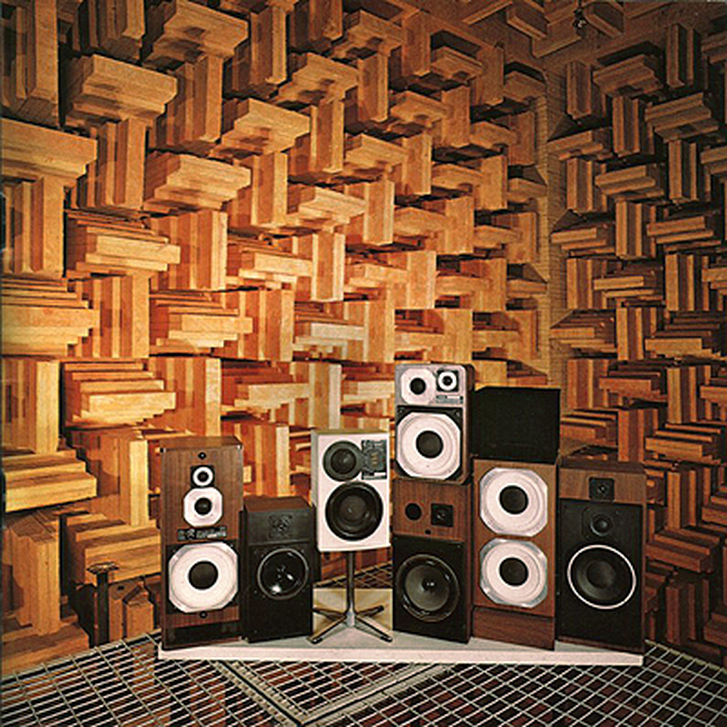
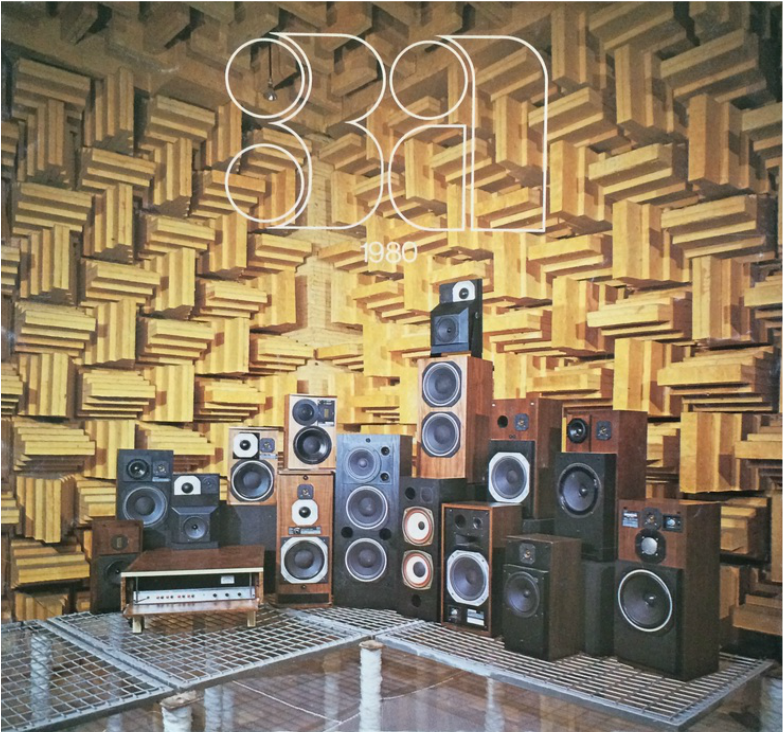
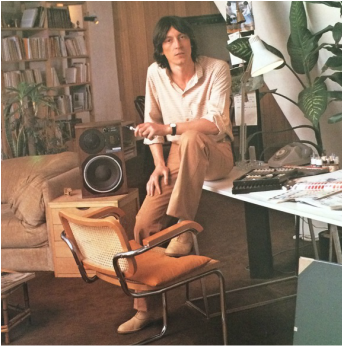
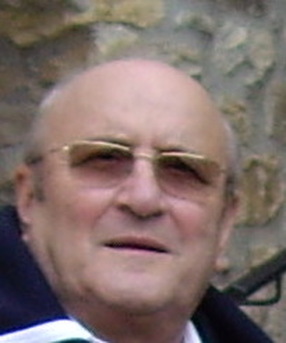
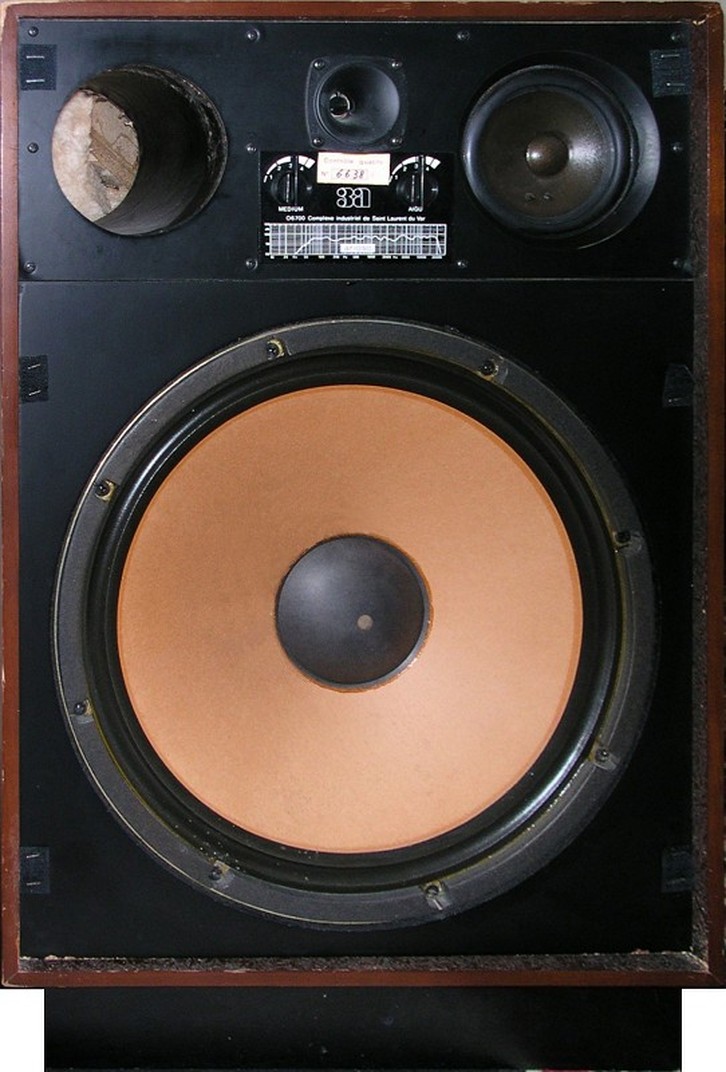
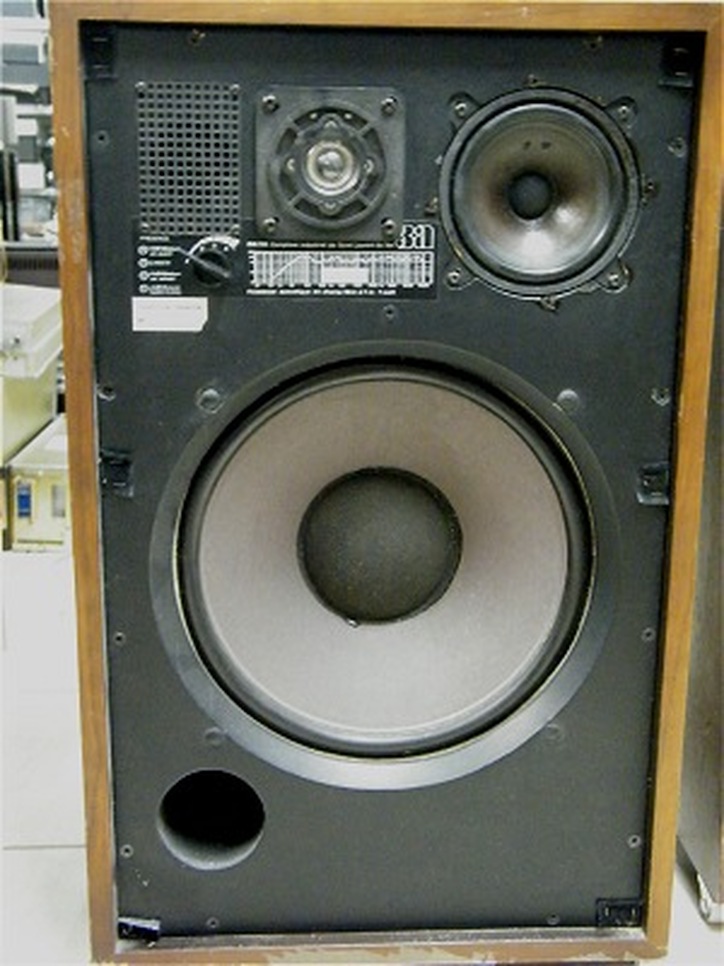
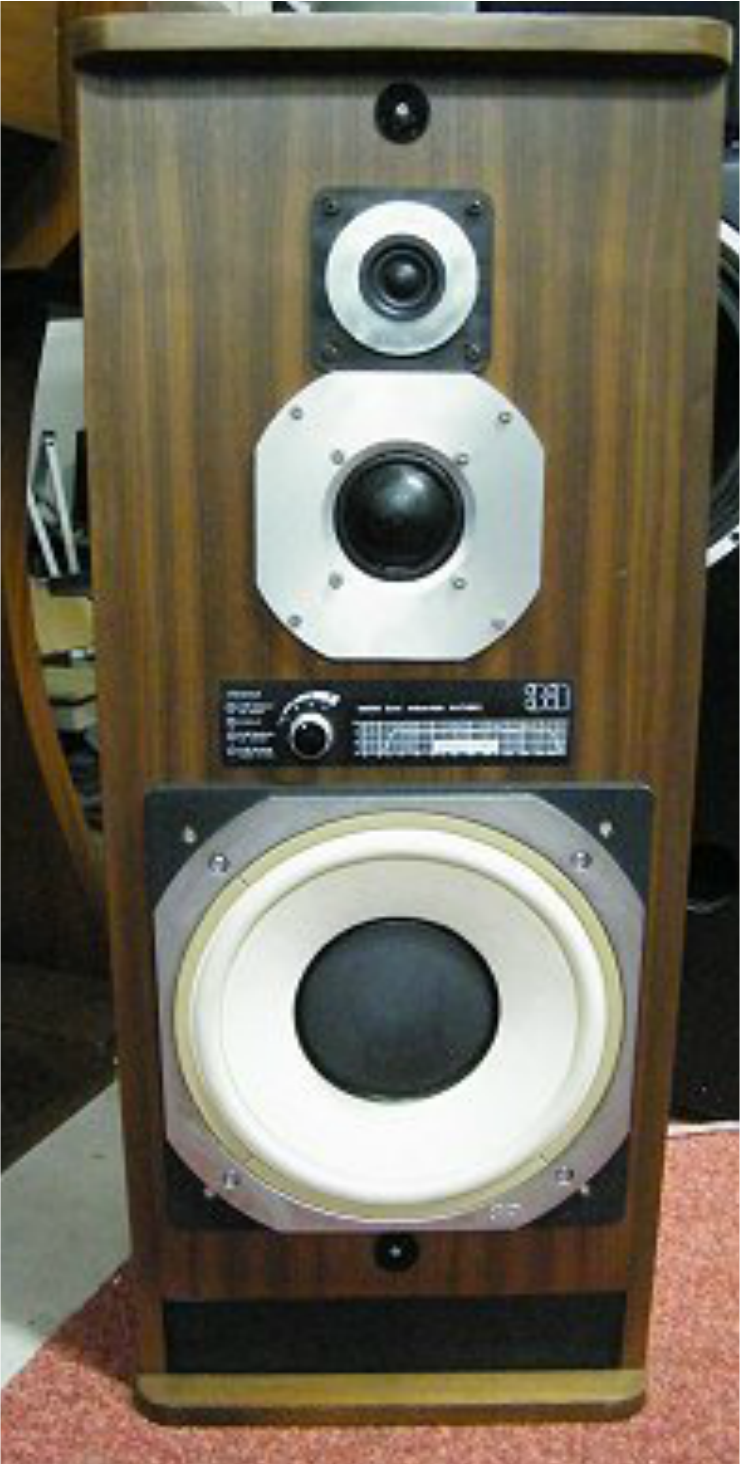
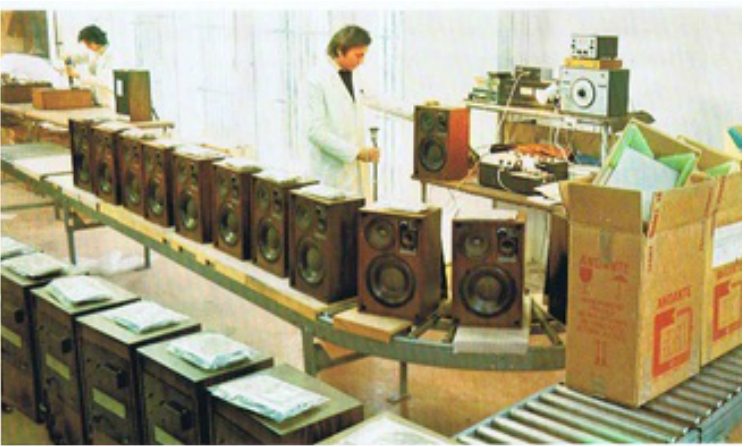
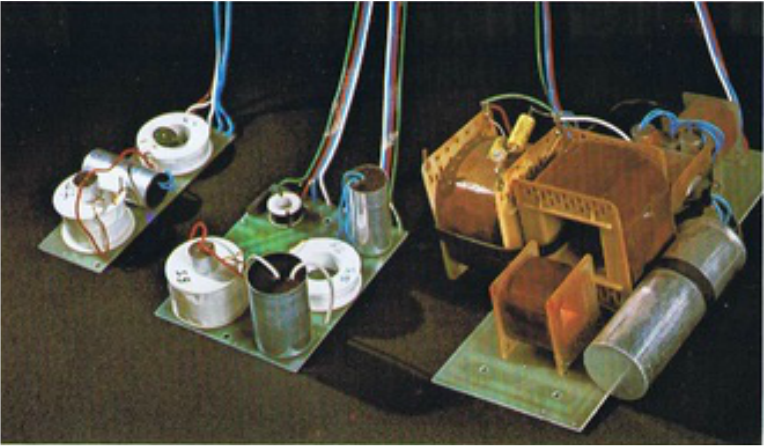
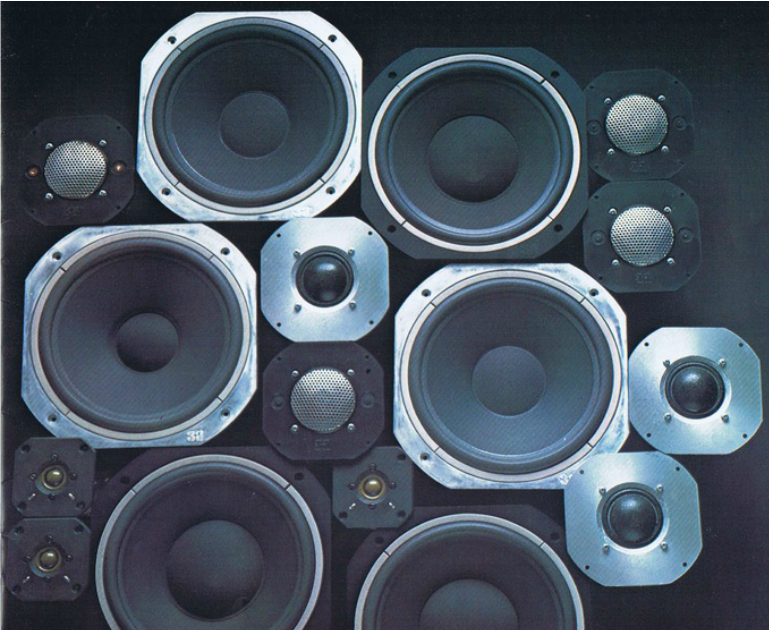
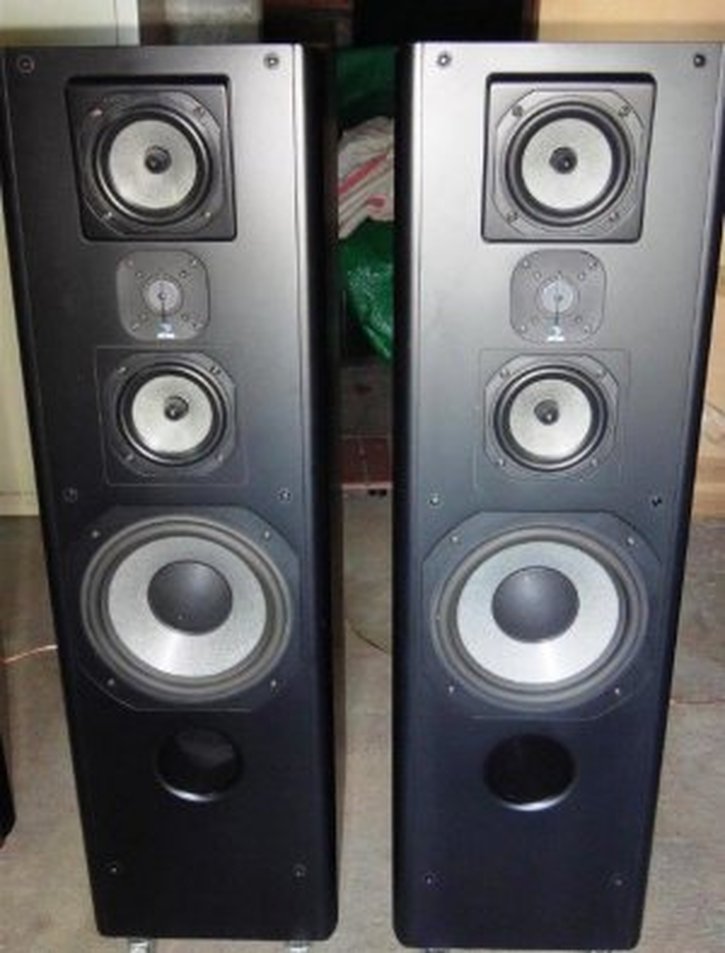

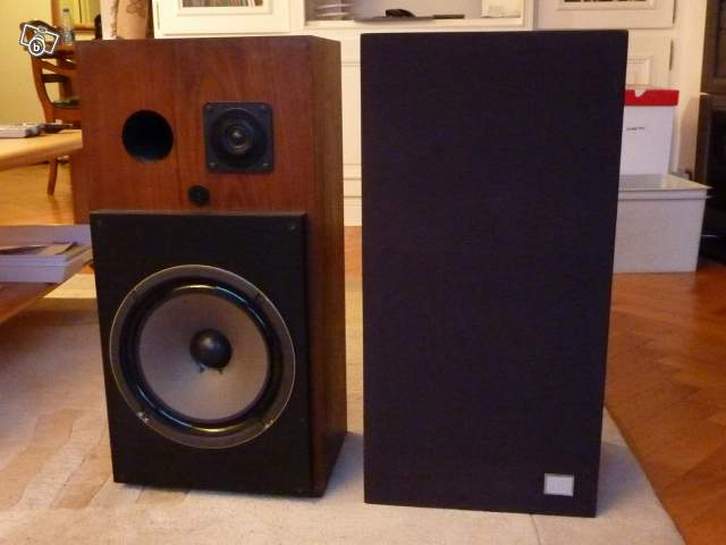
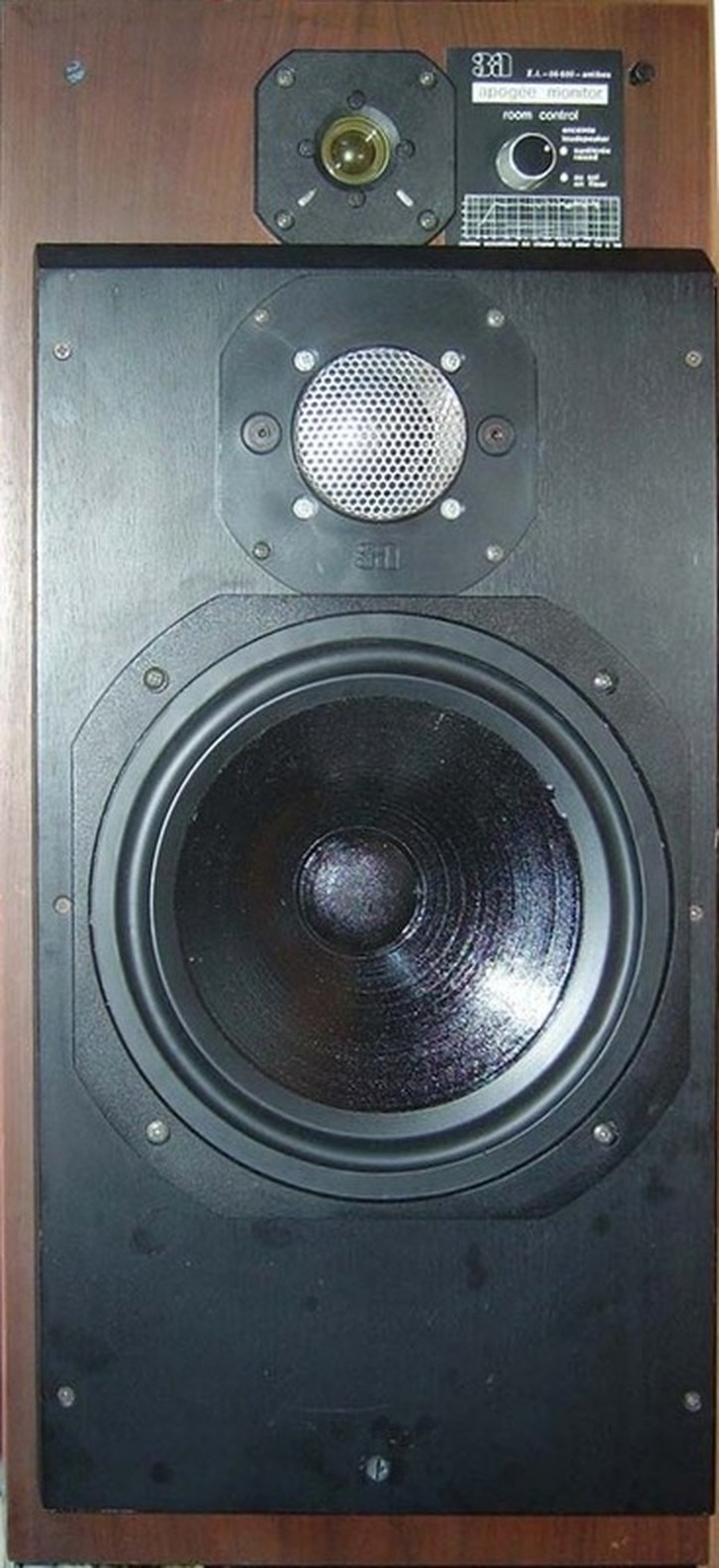
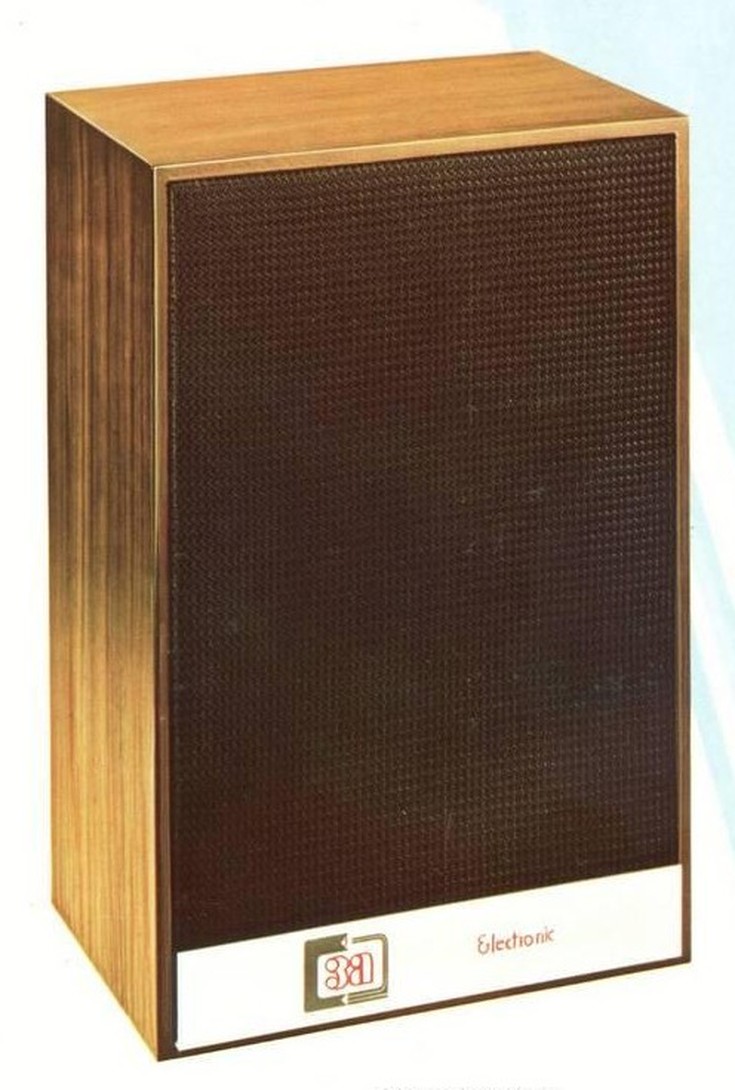
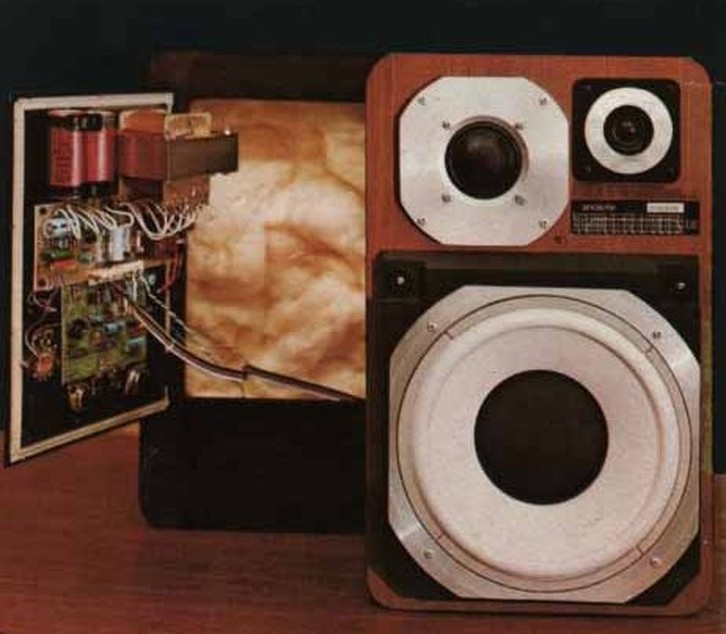

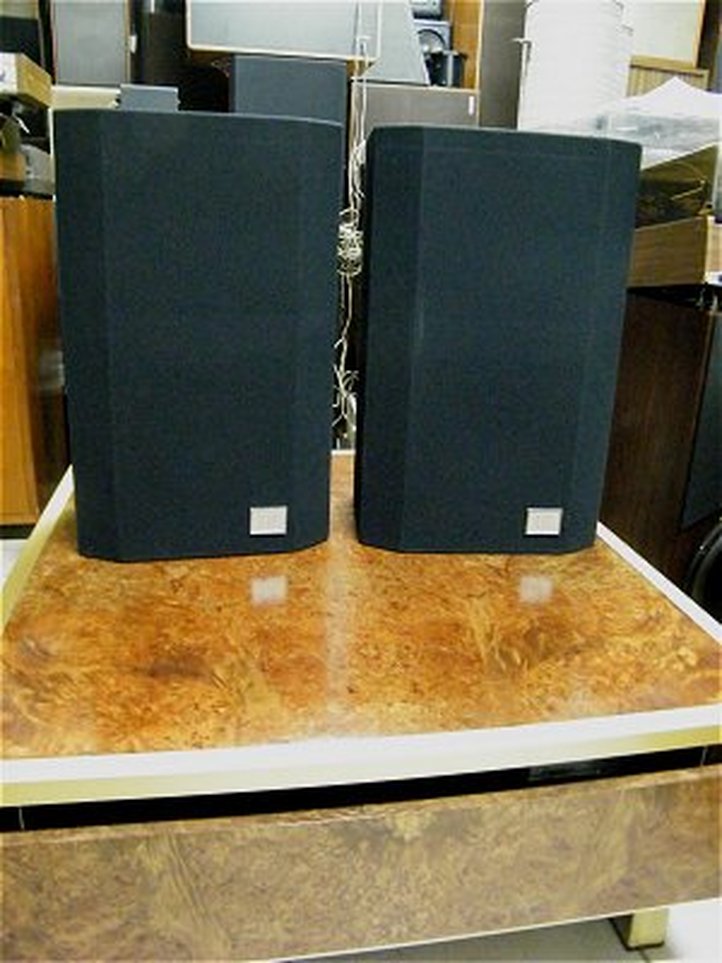
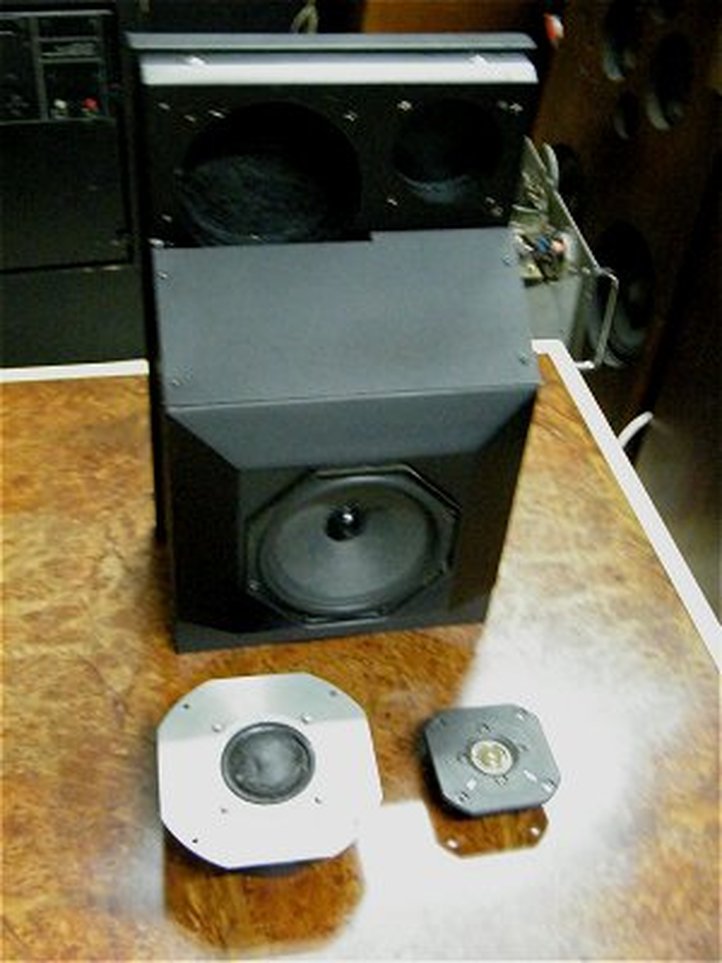
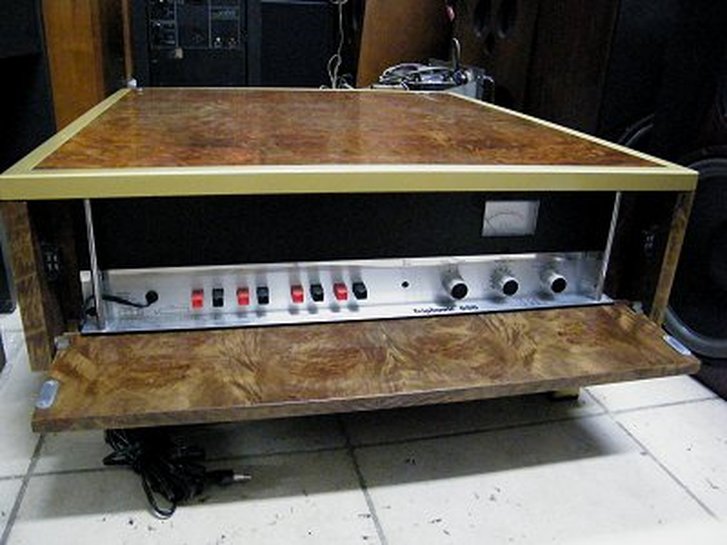
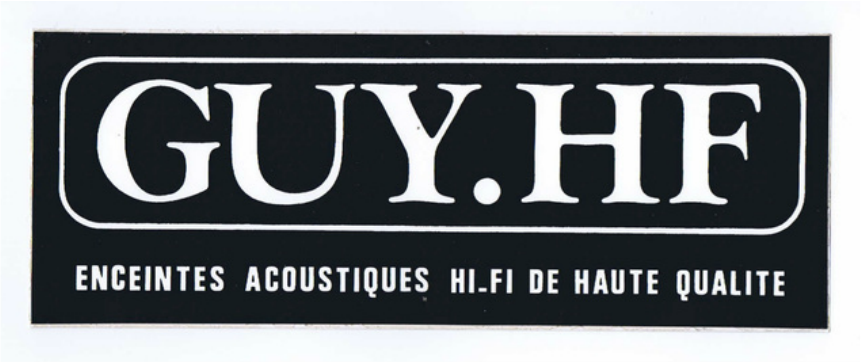
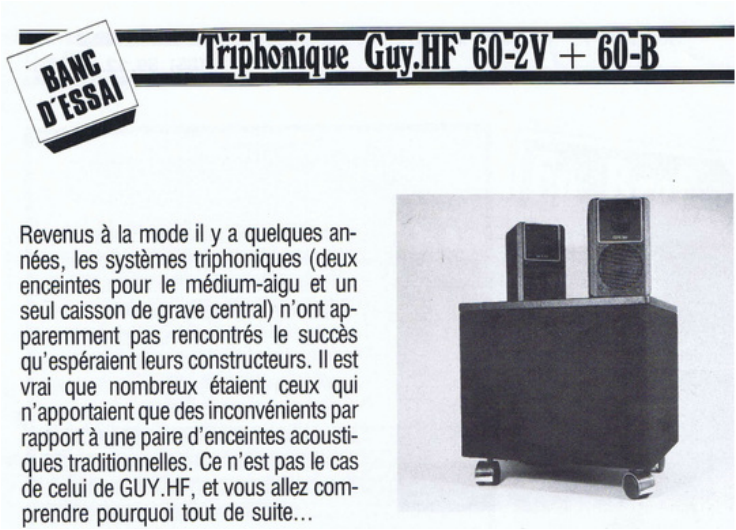
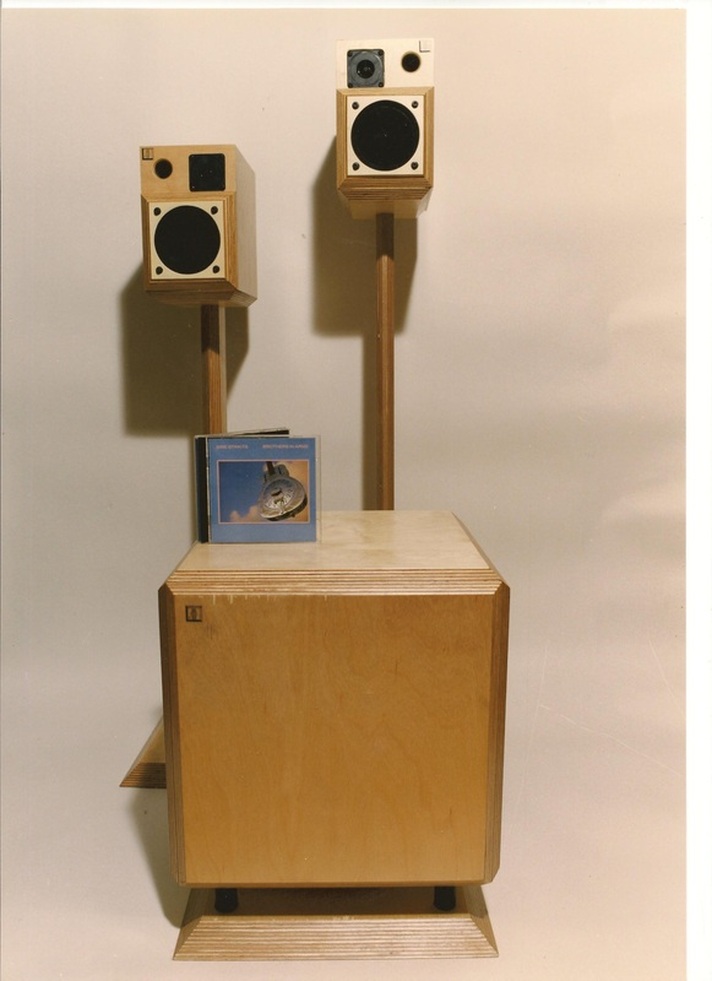
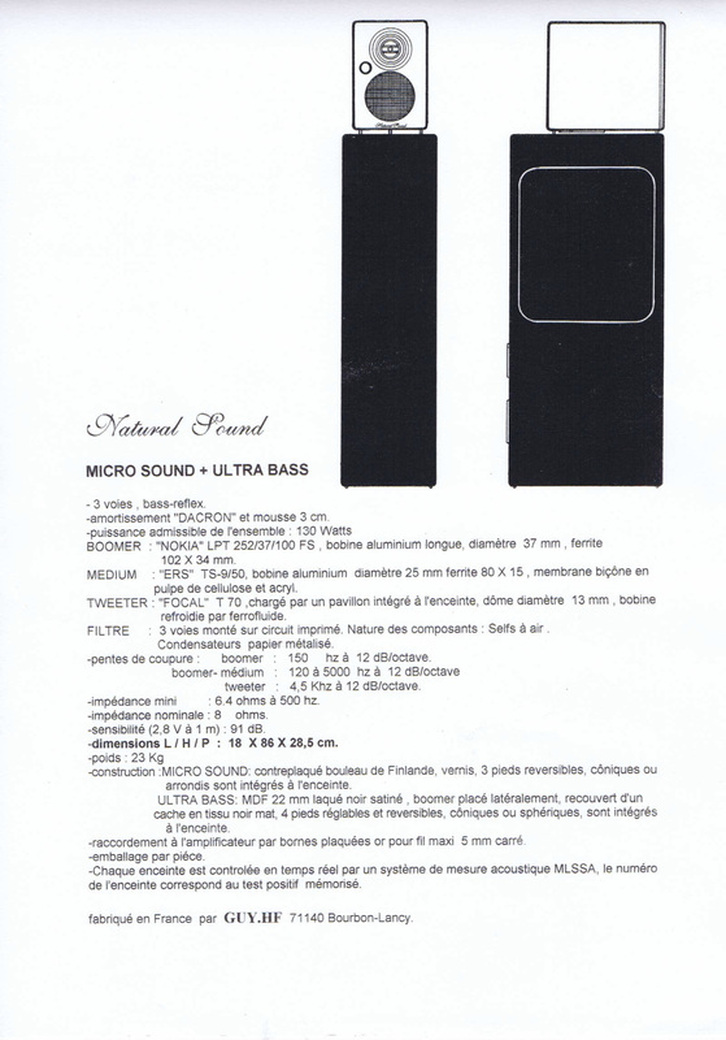
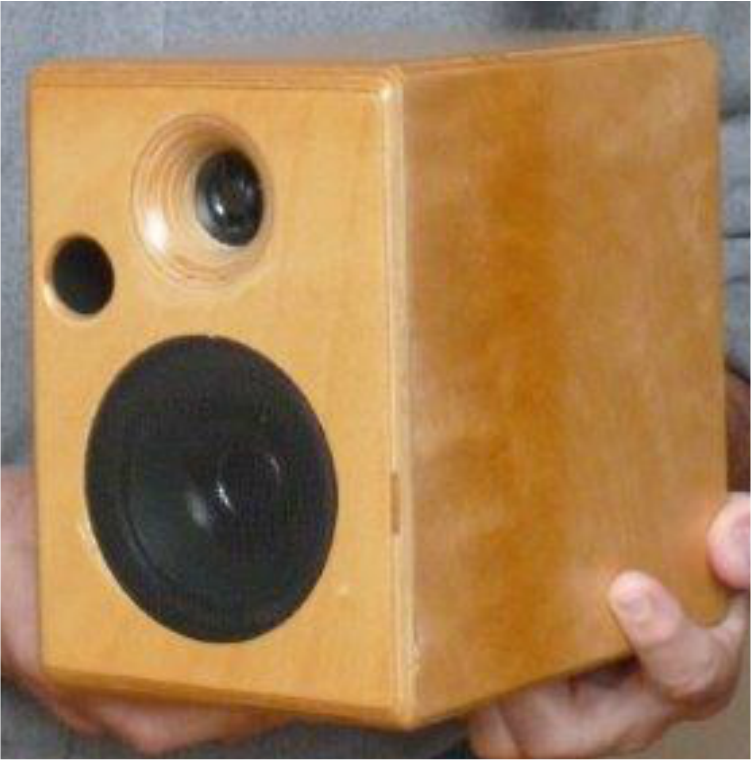
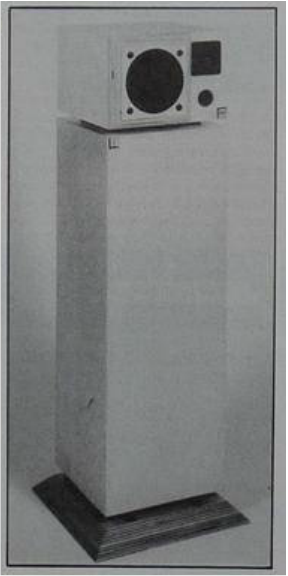
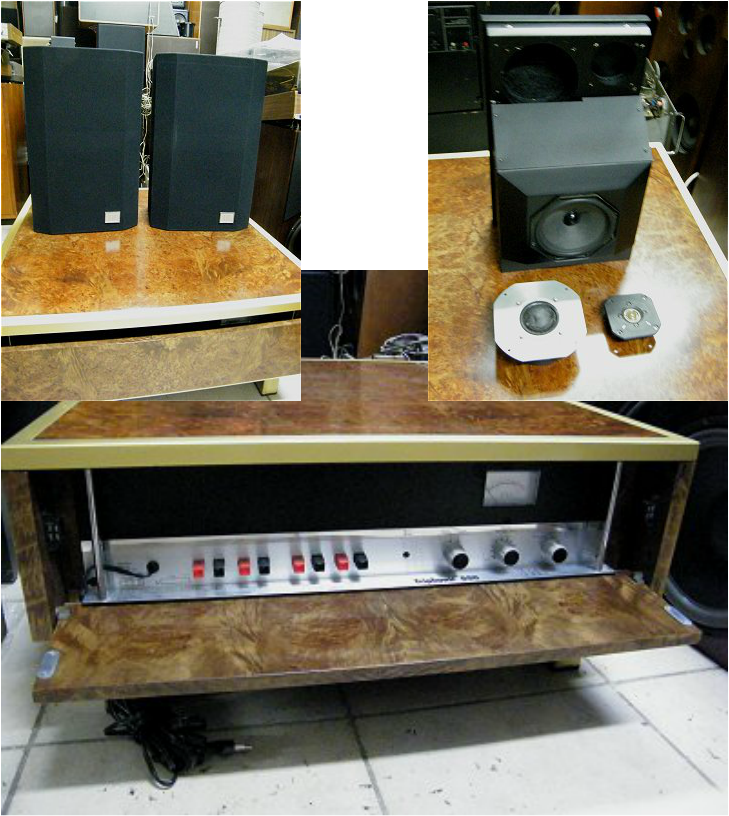
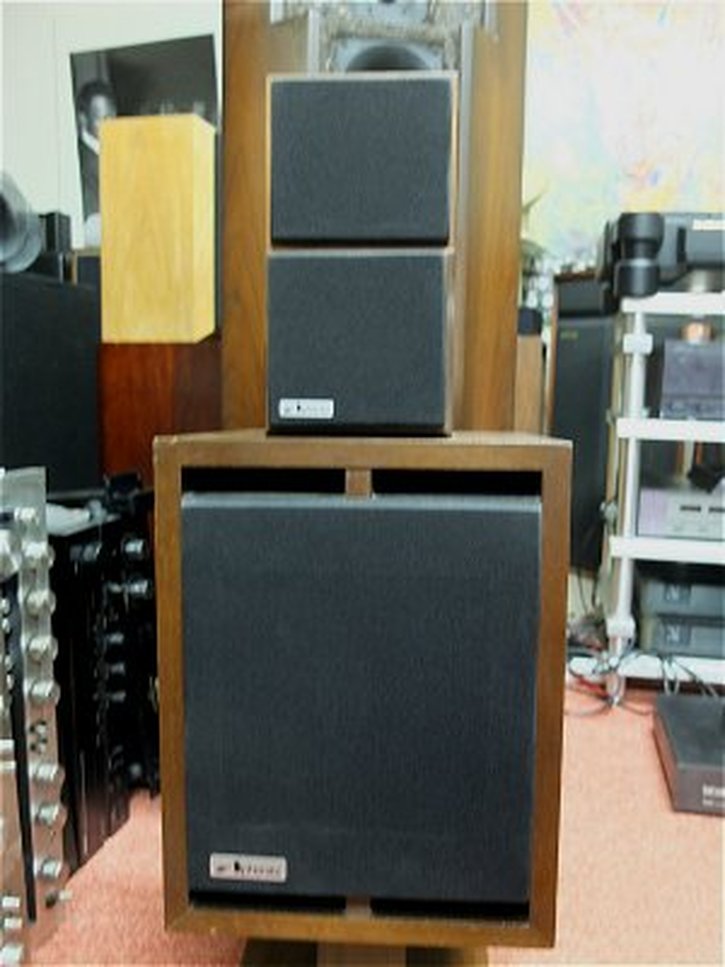
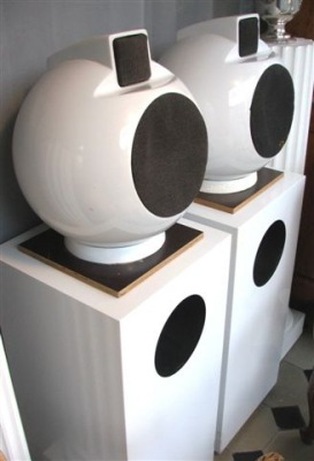
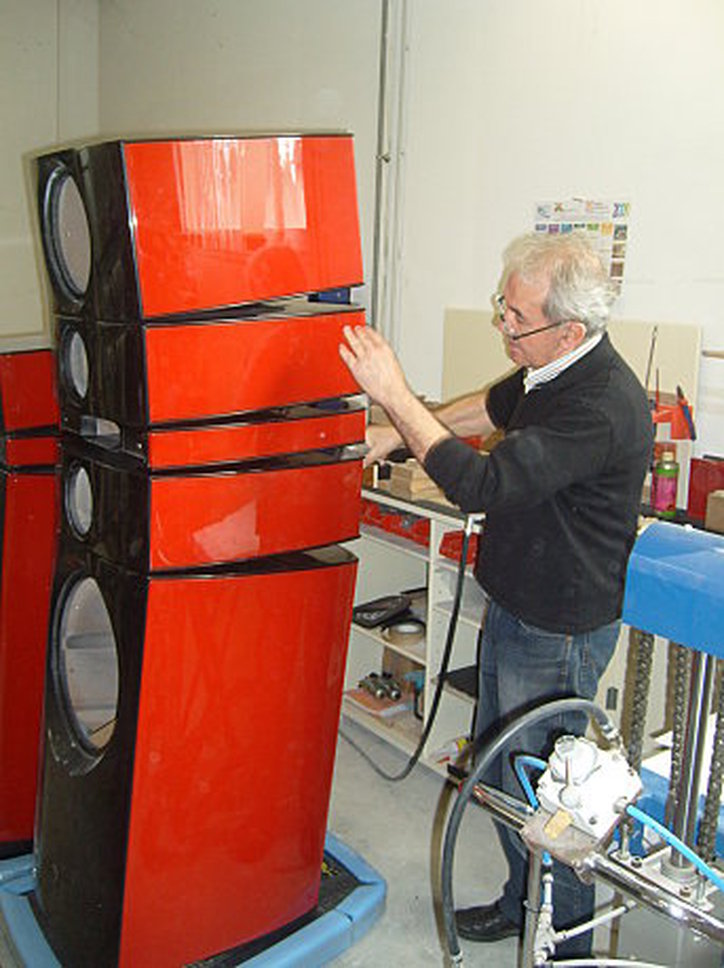
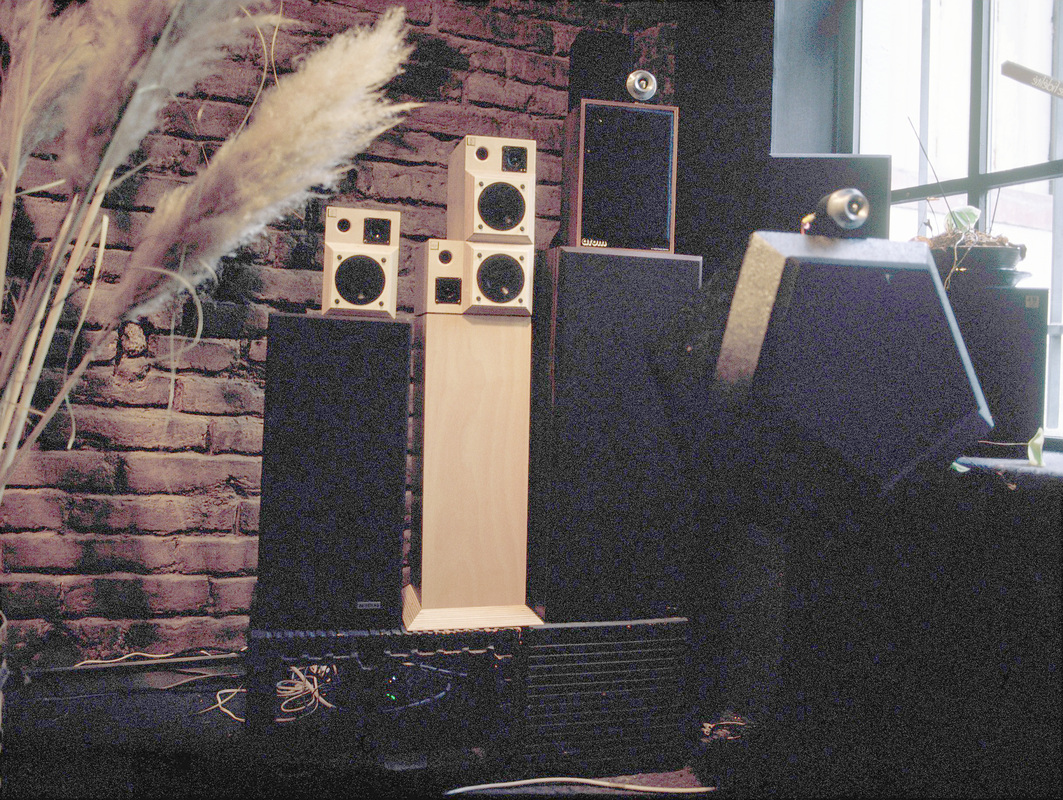

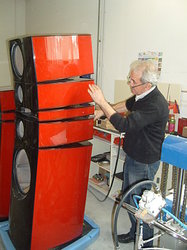
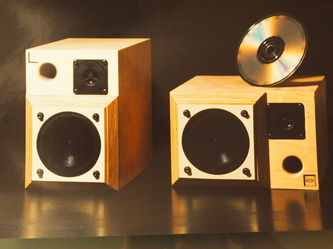
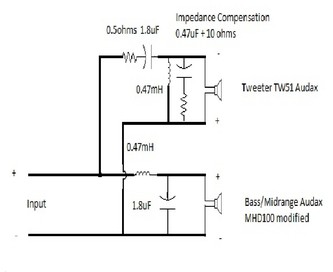
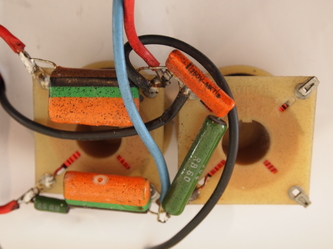
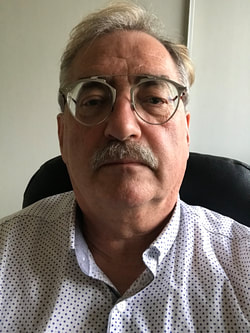
 RSS Feed
RSS Feed
